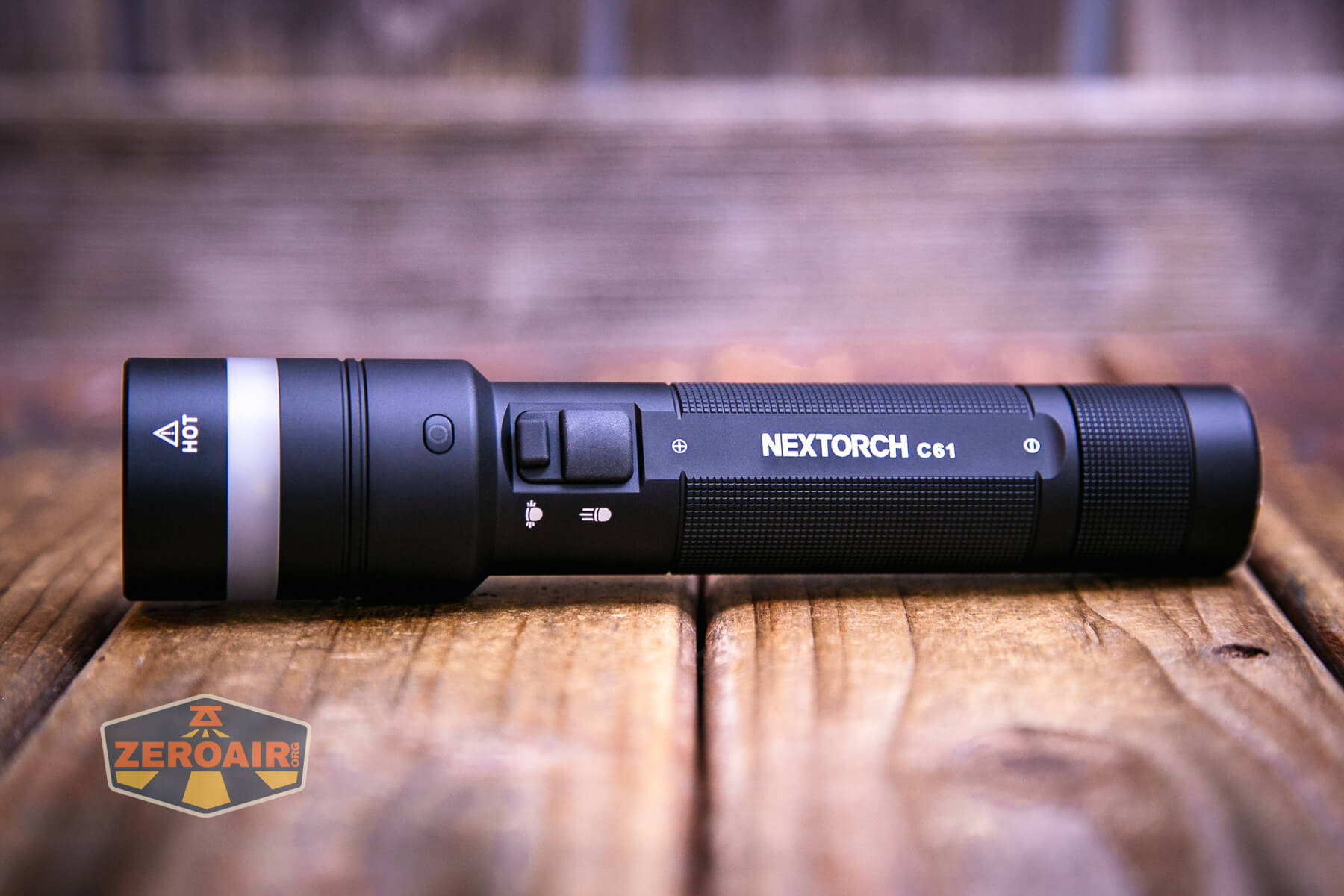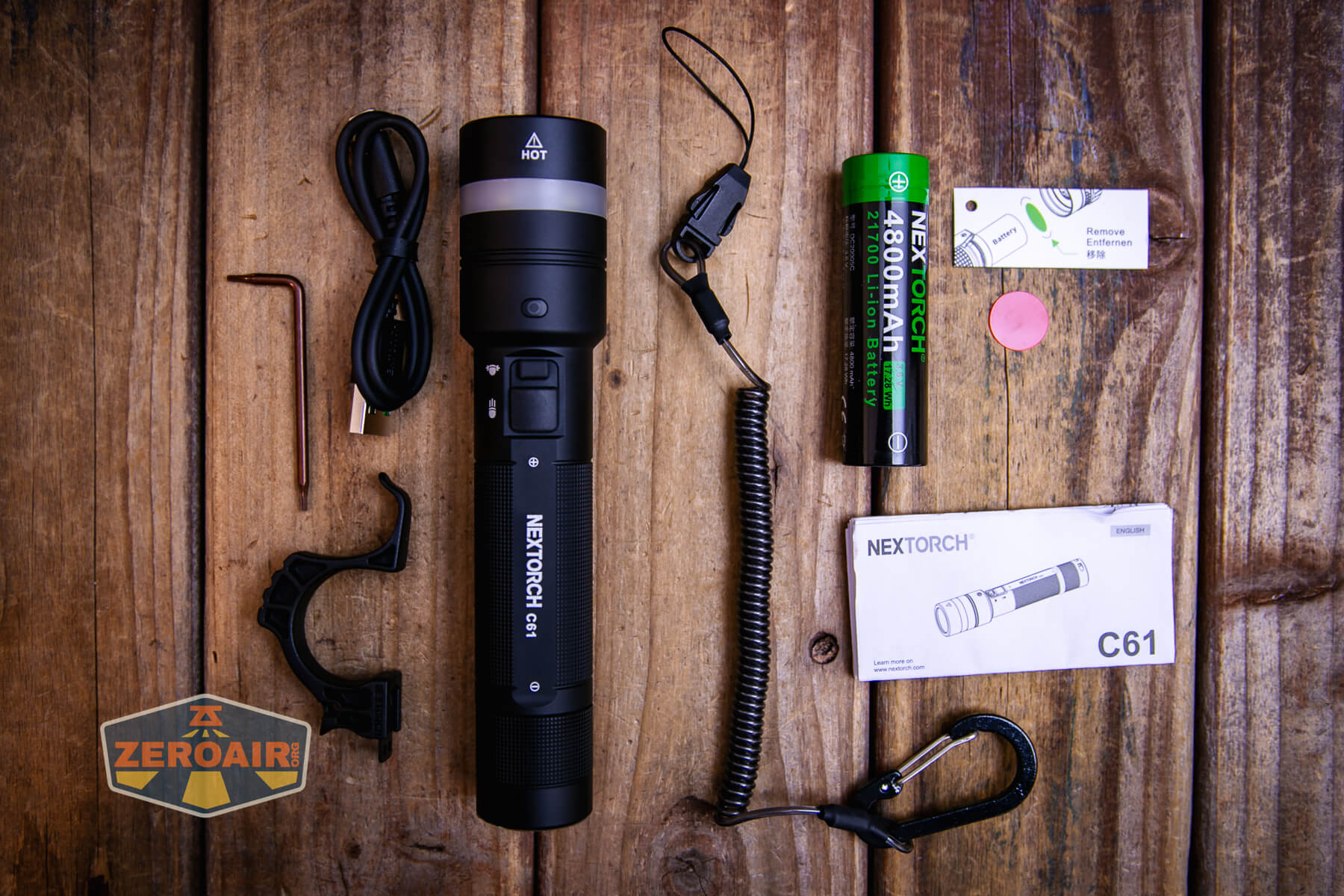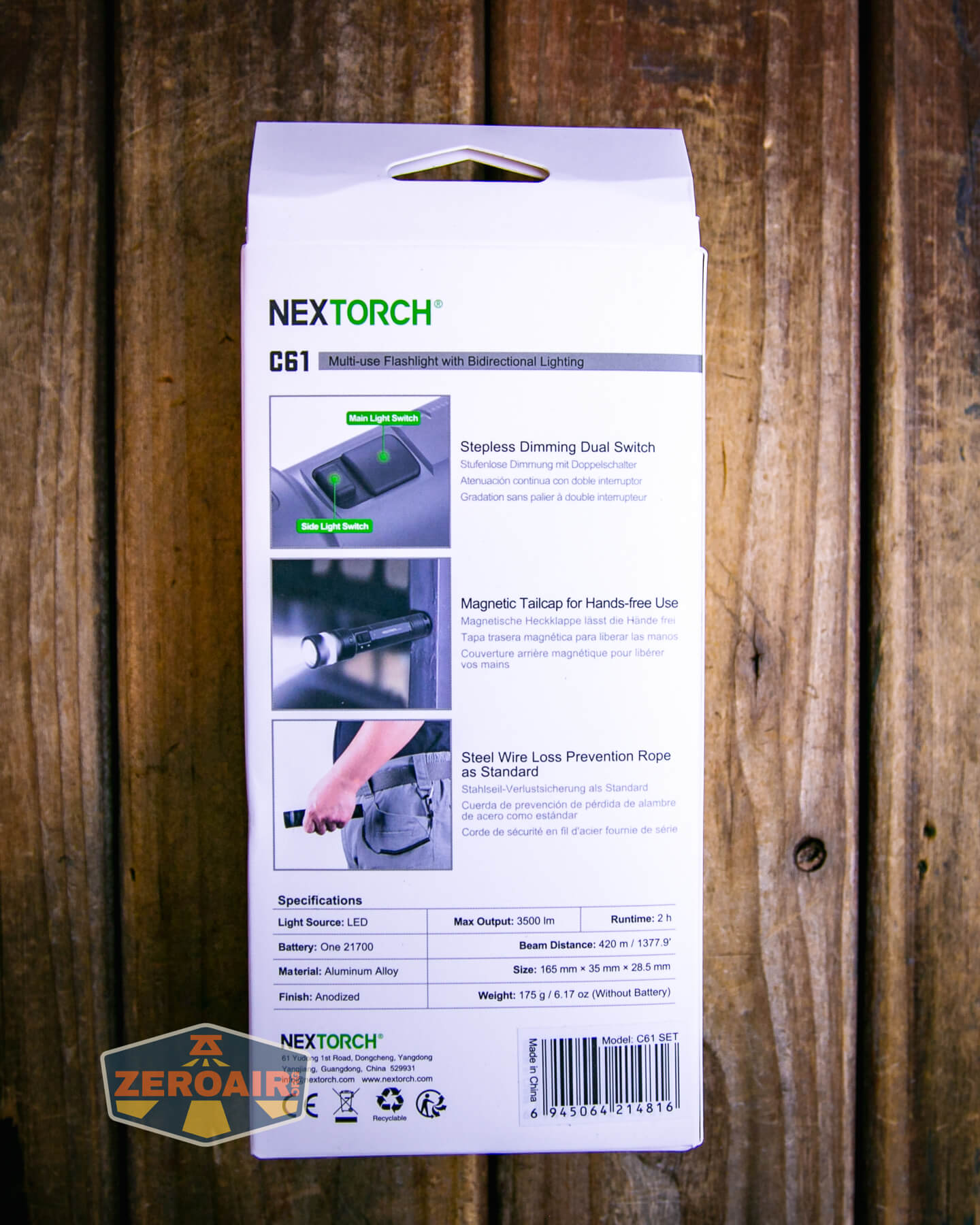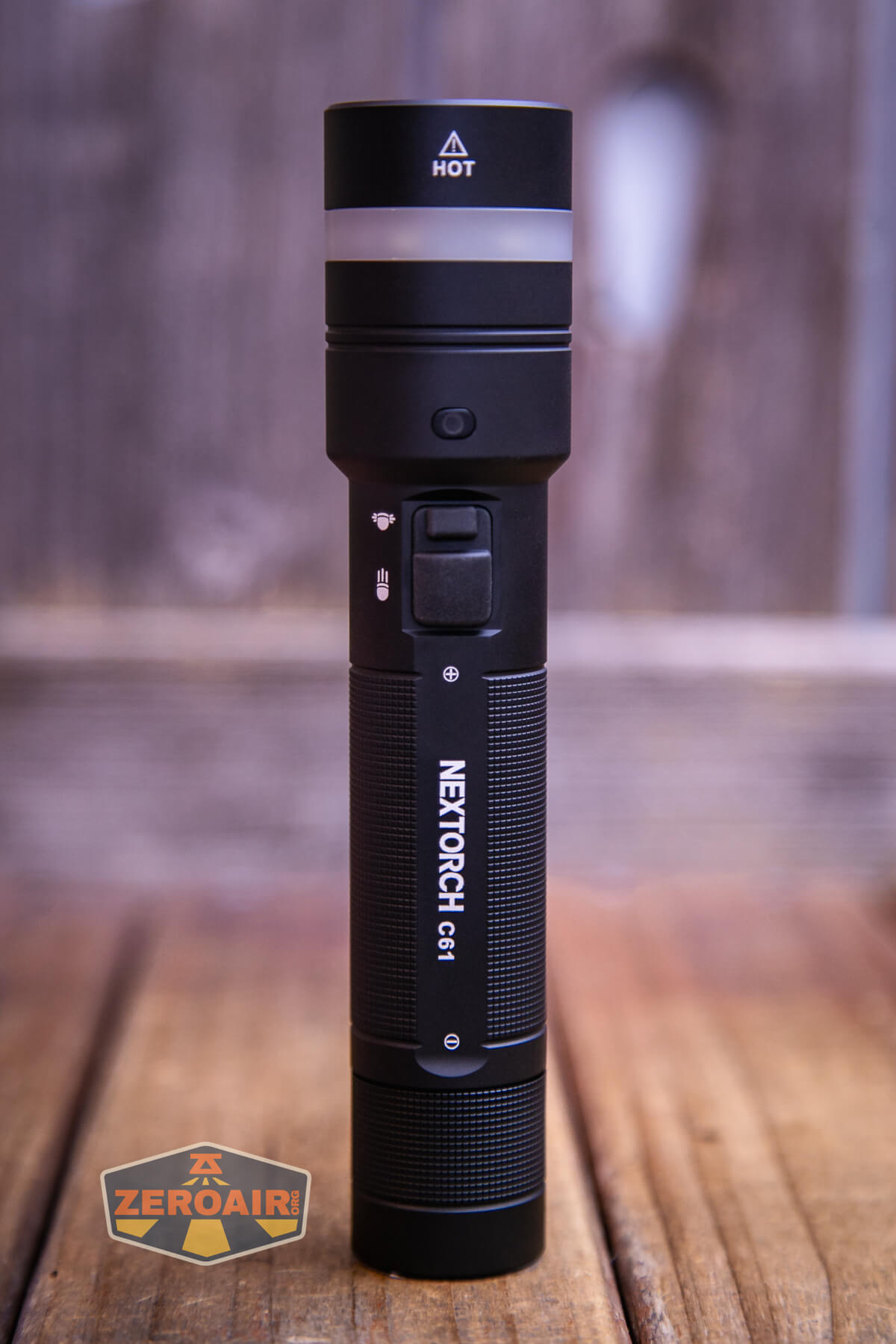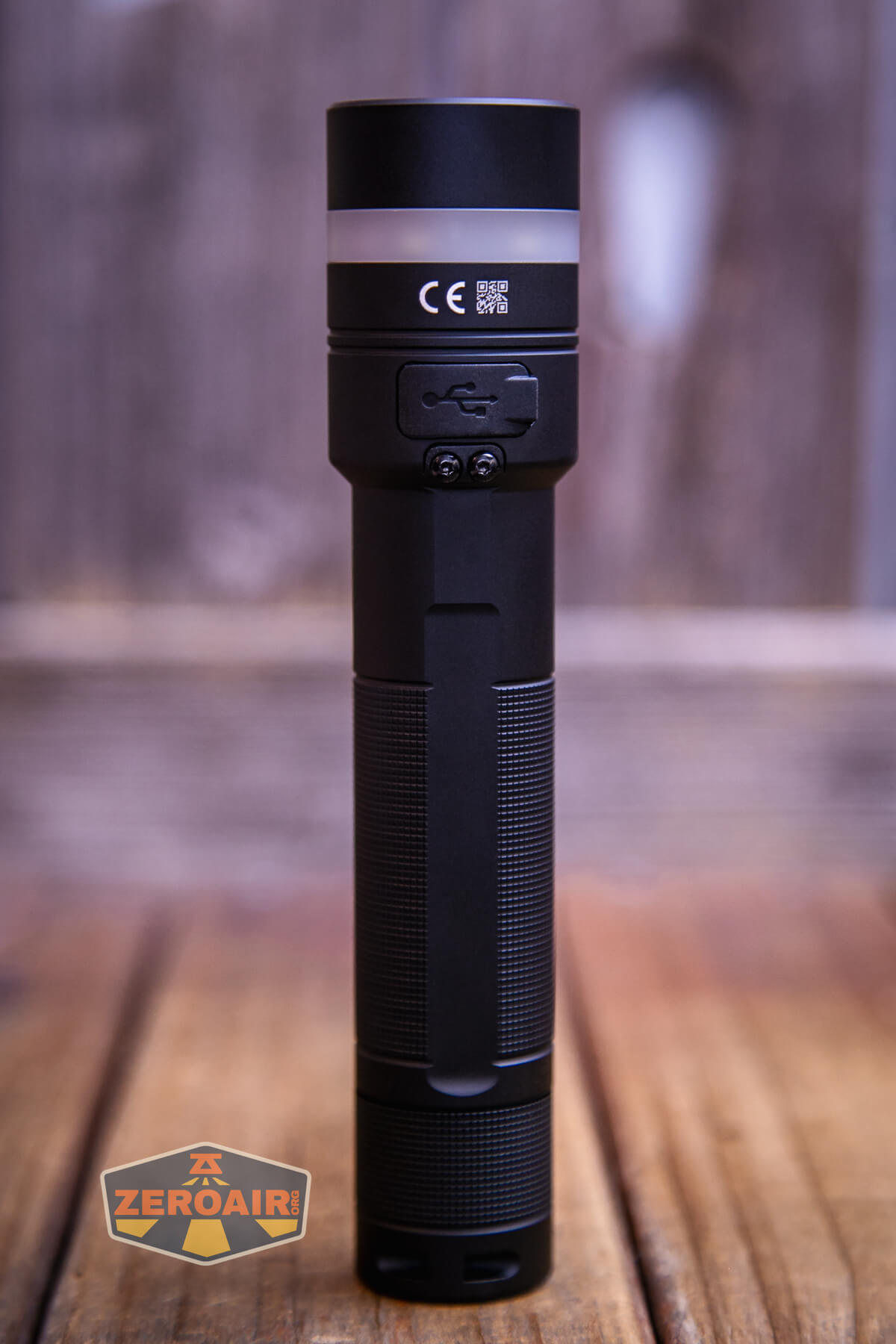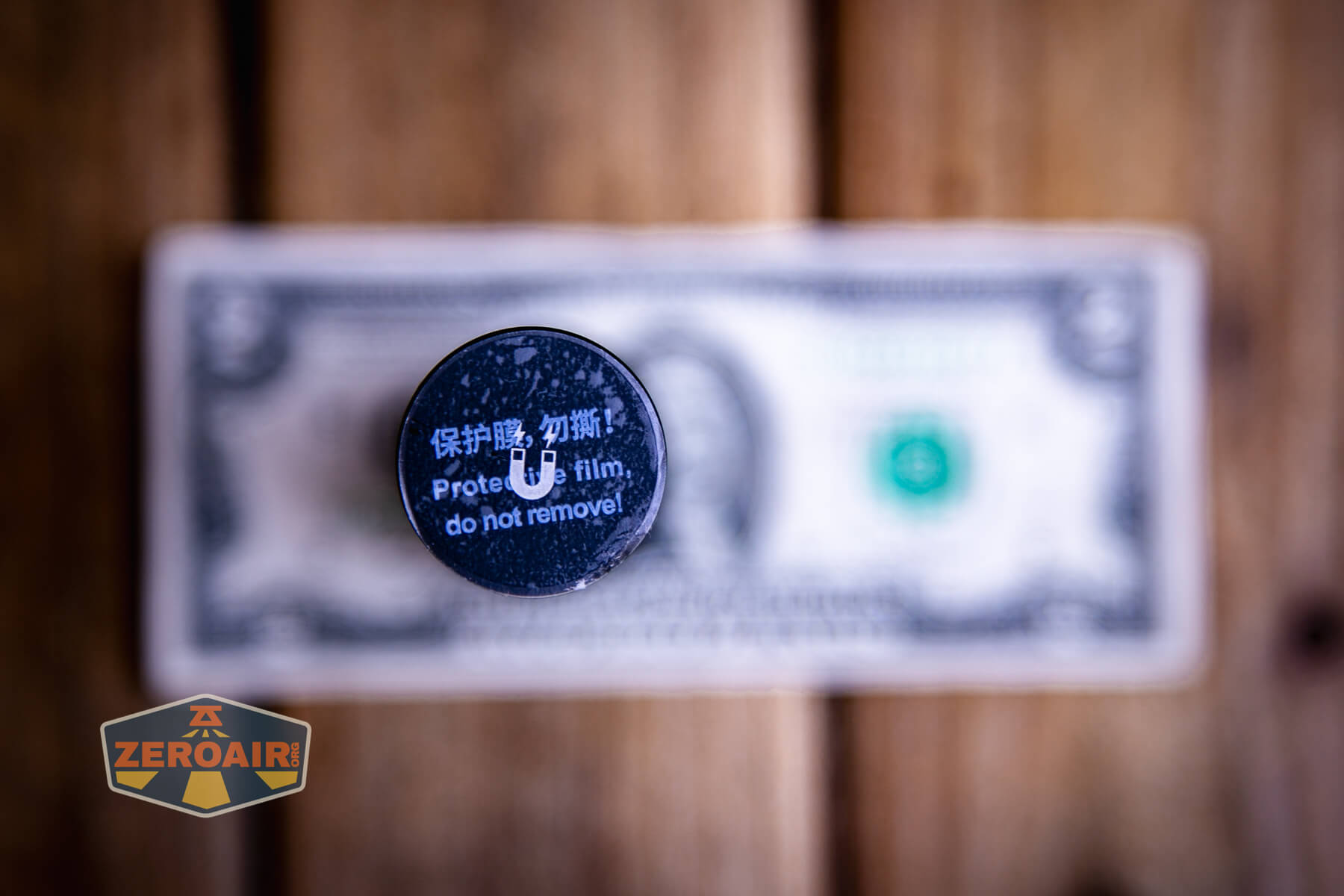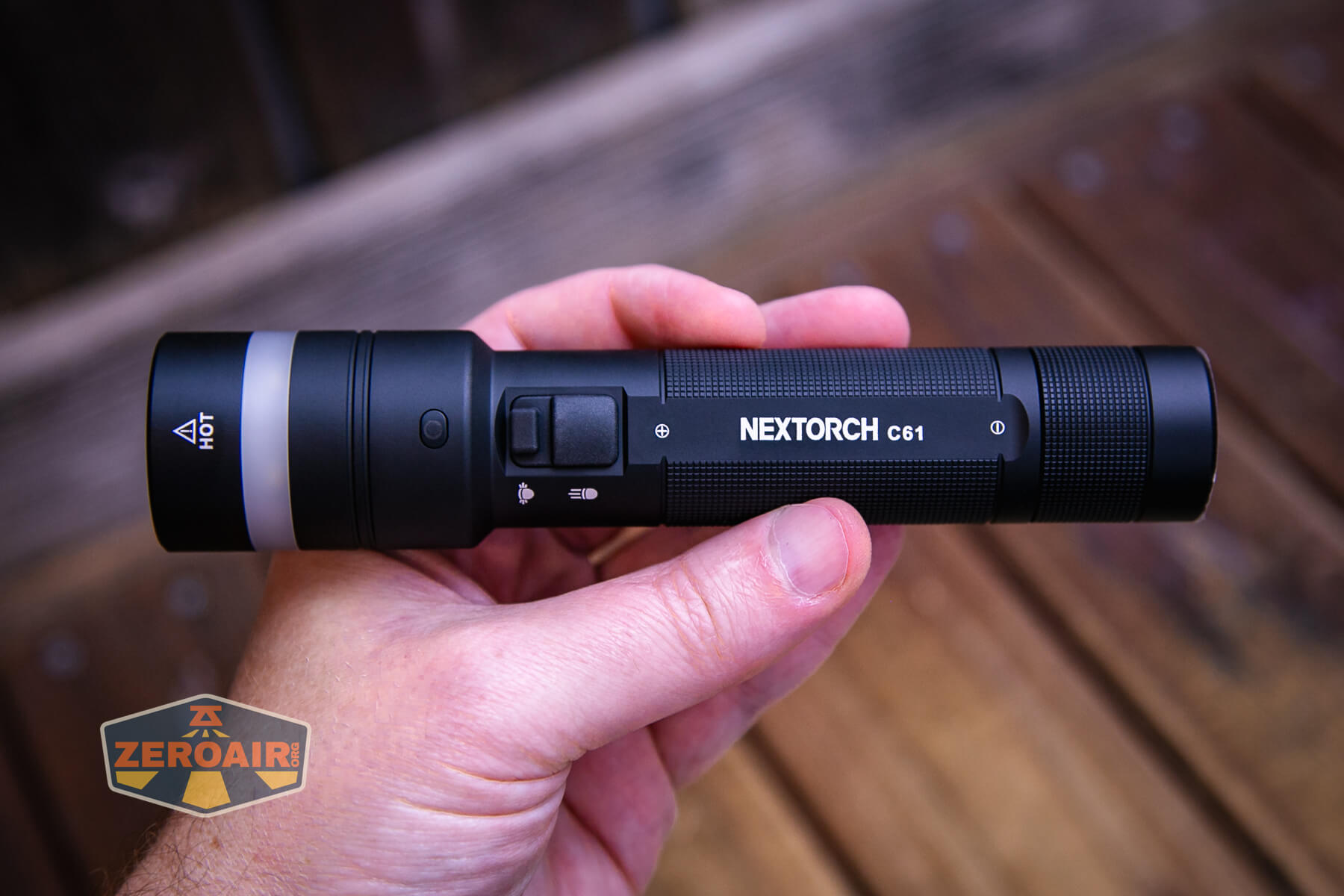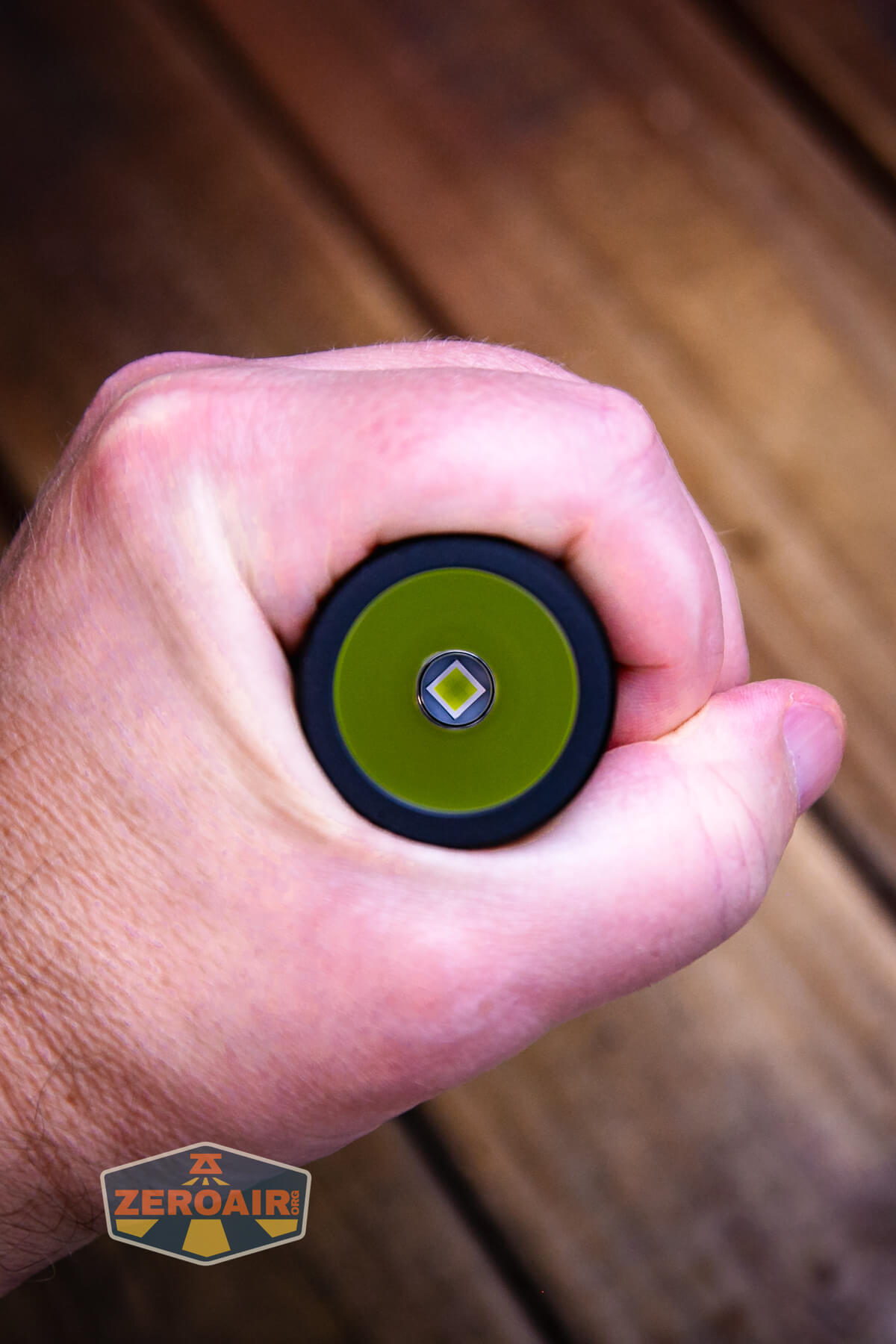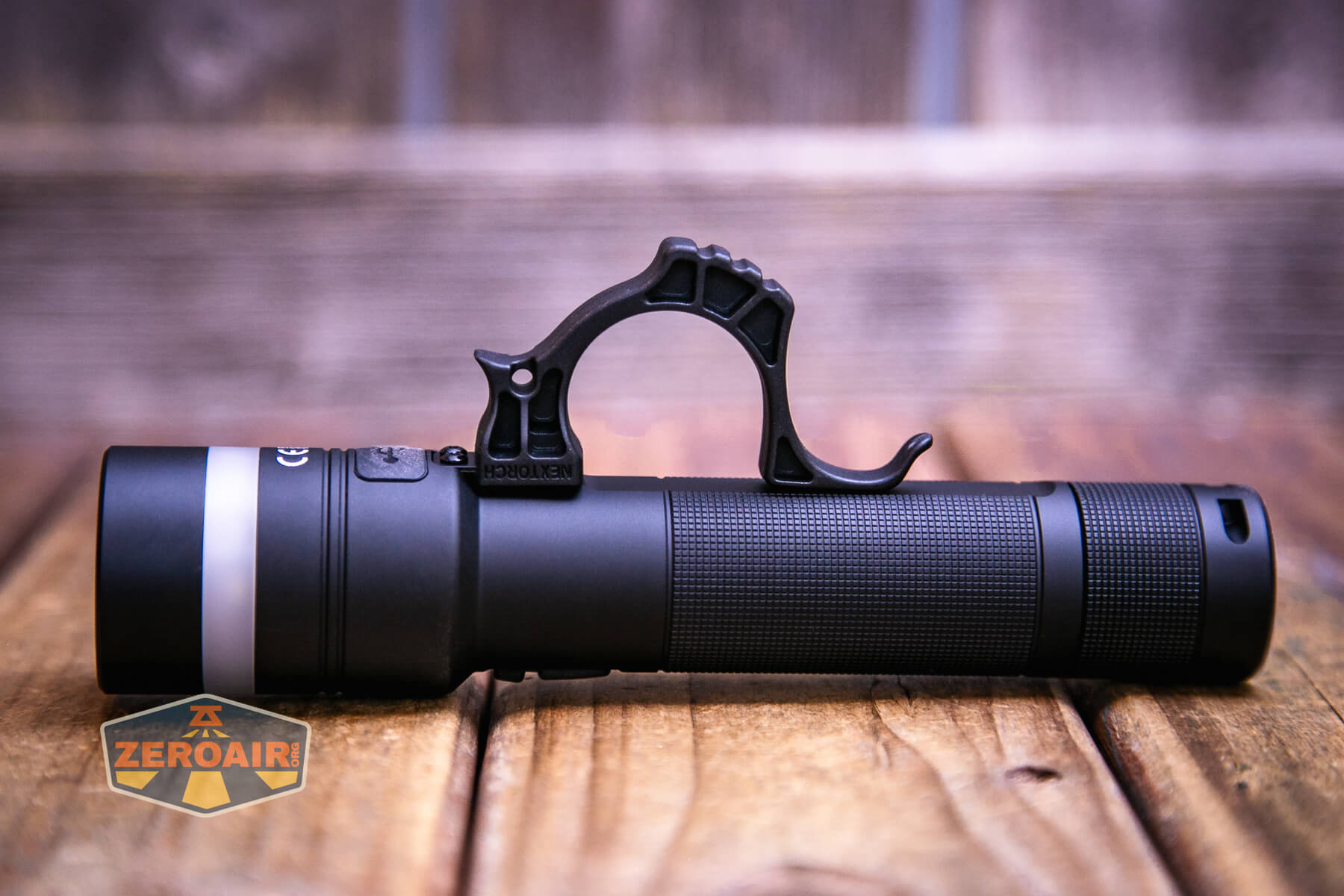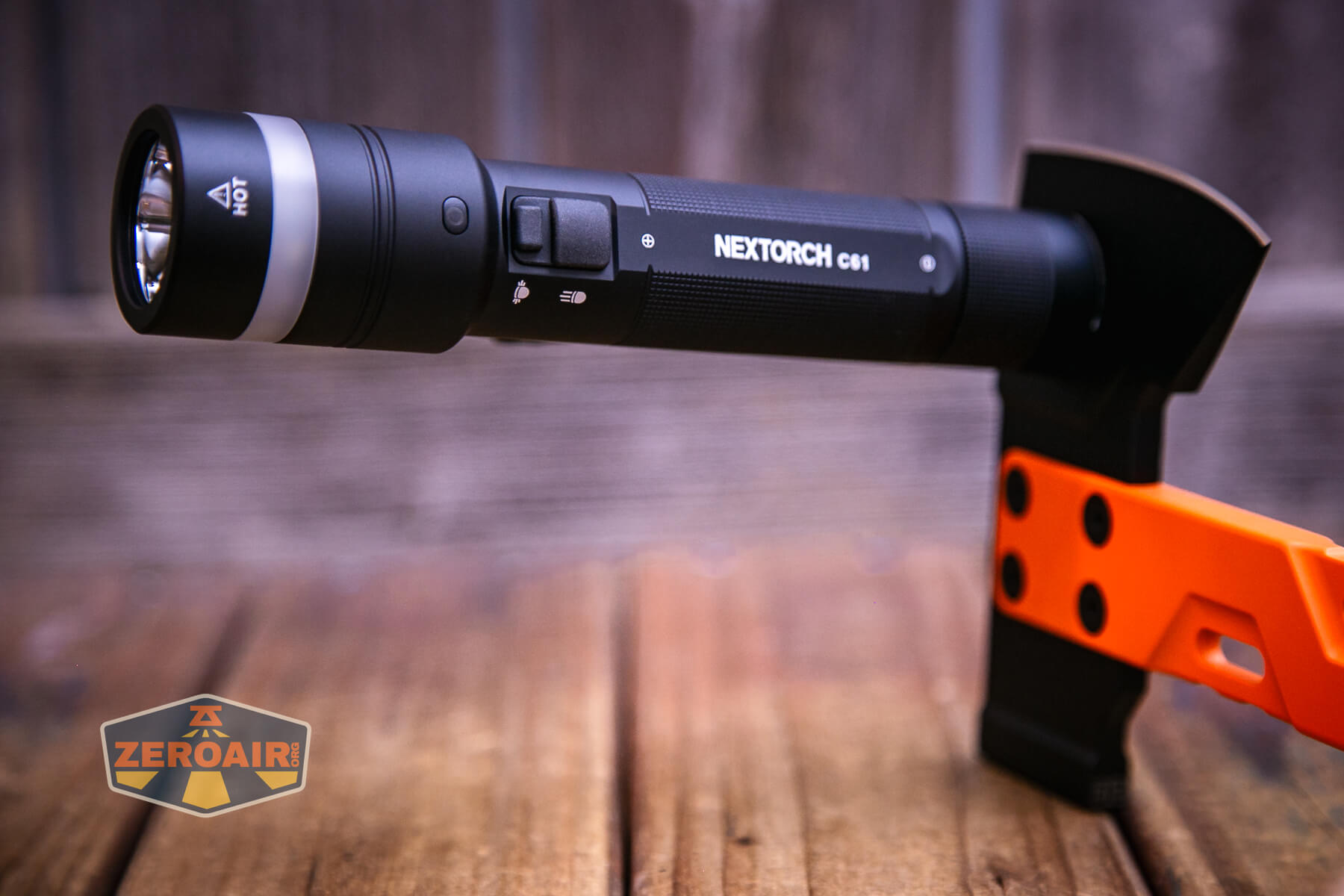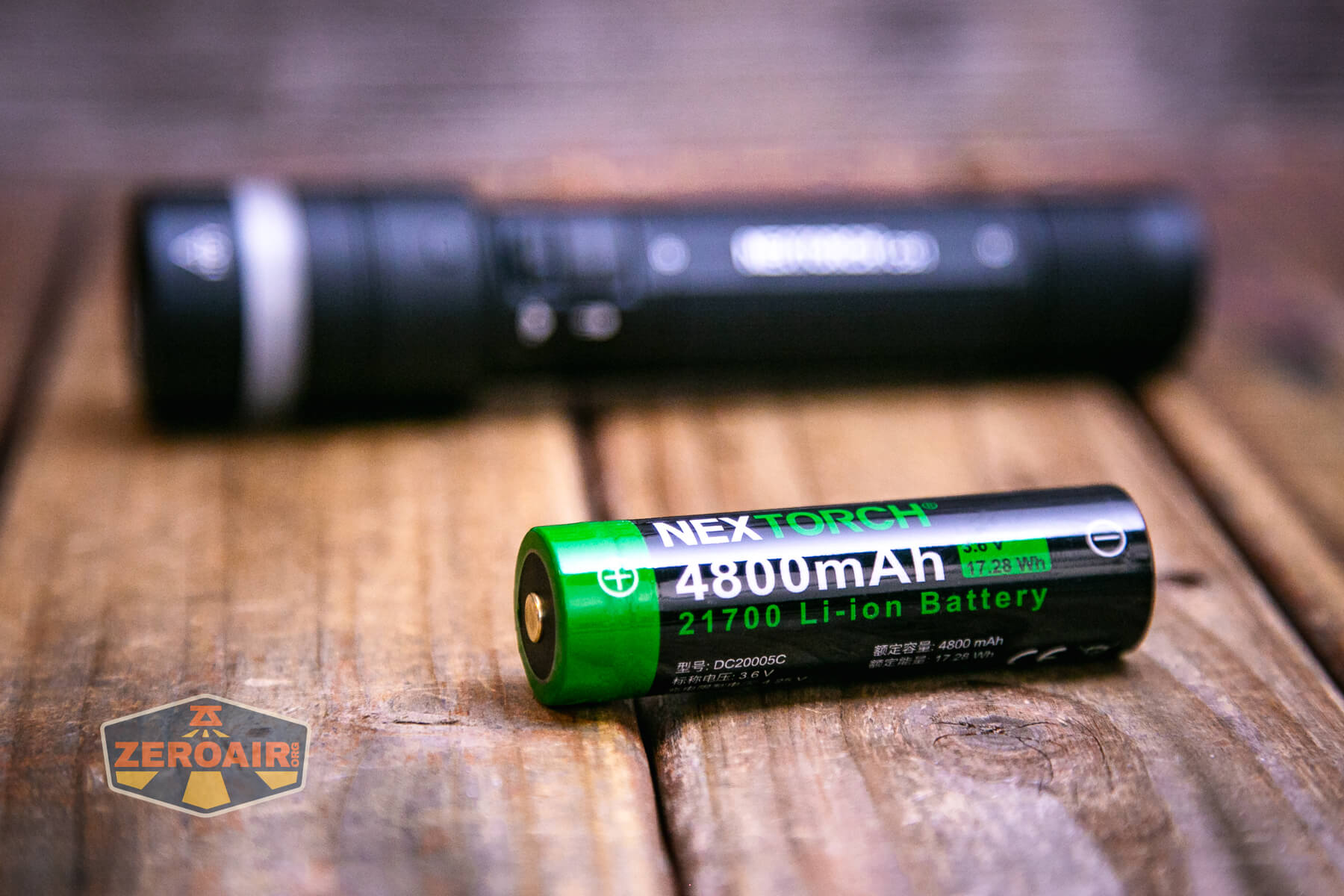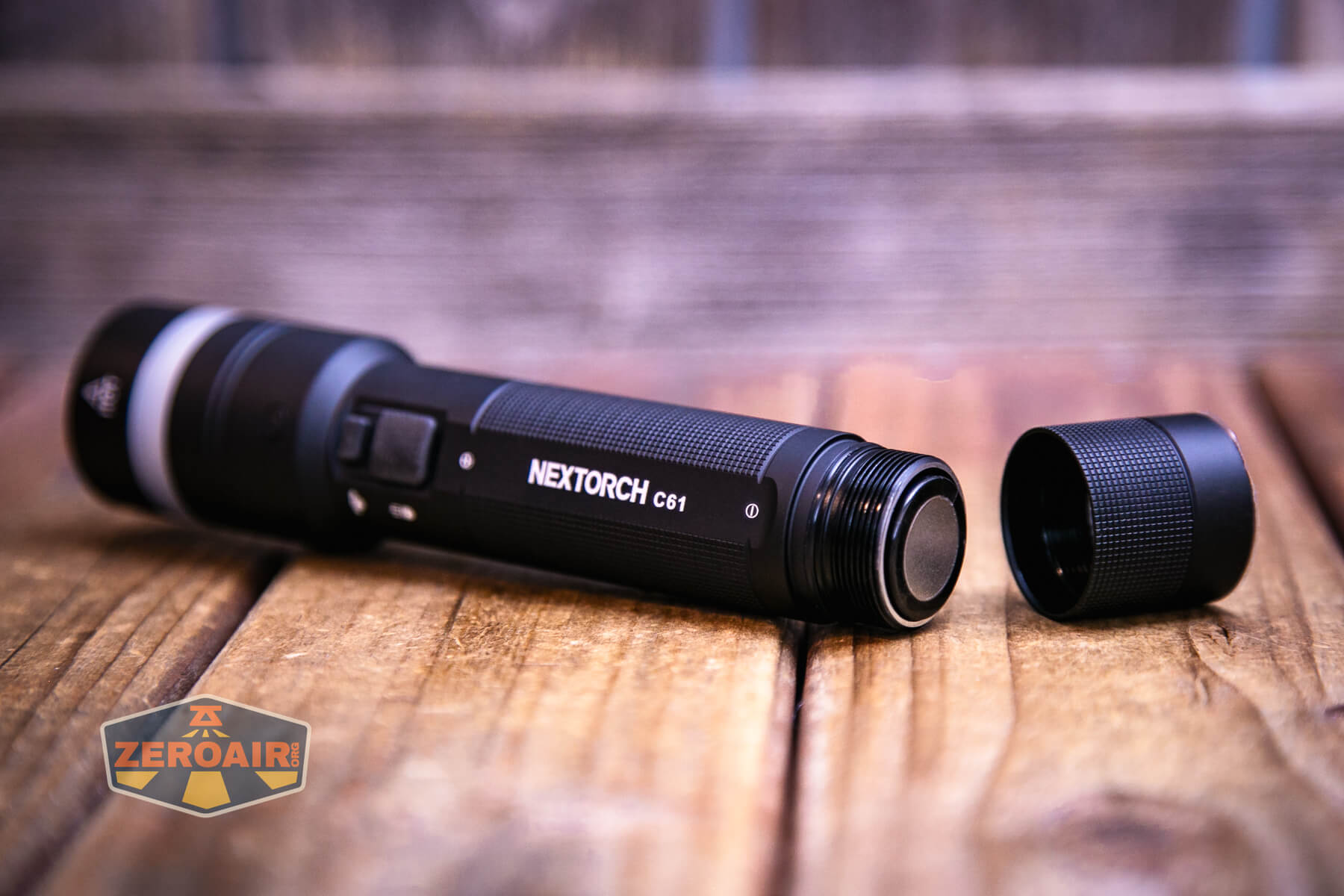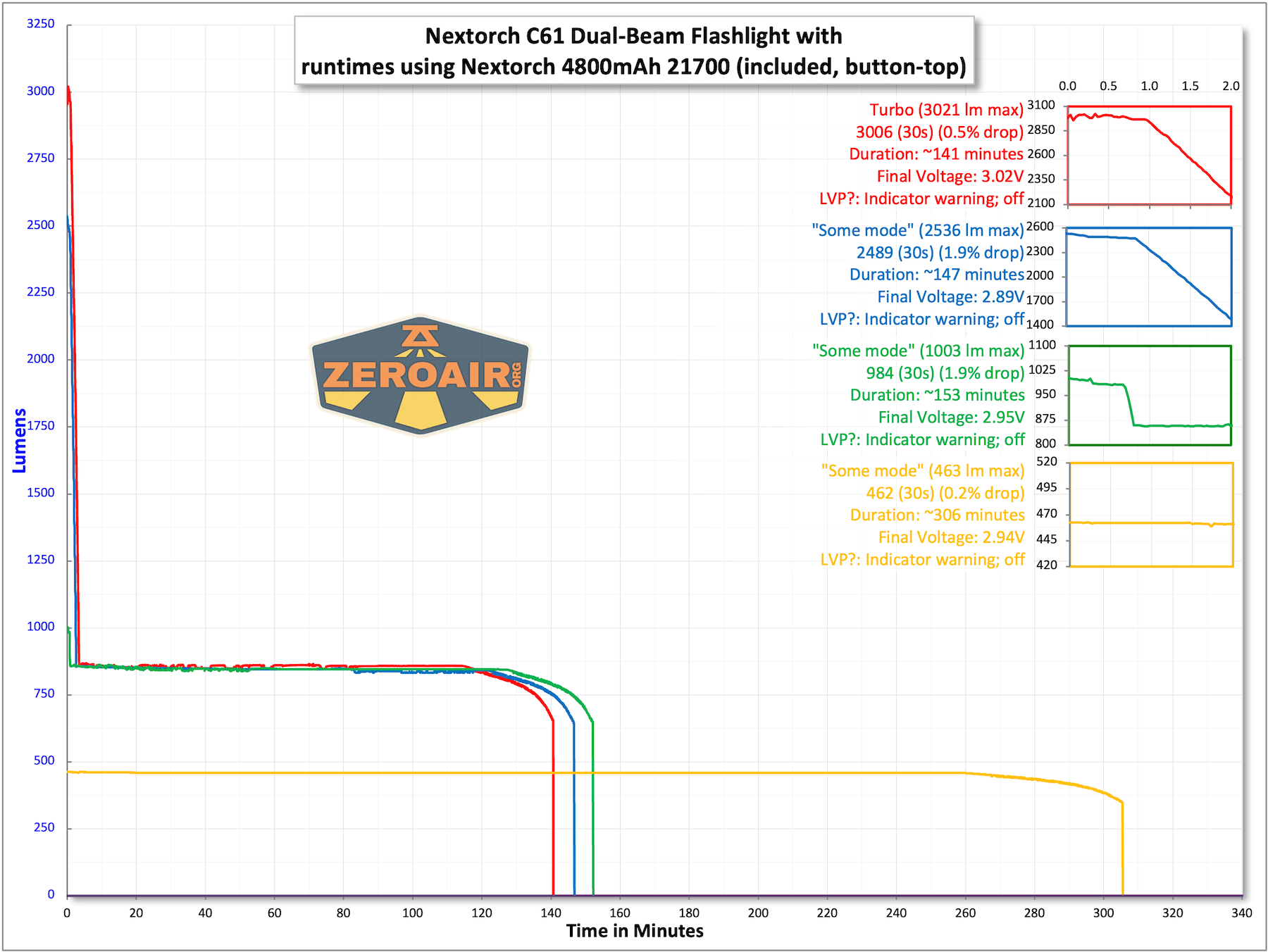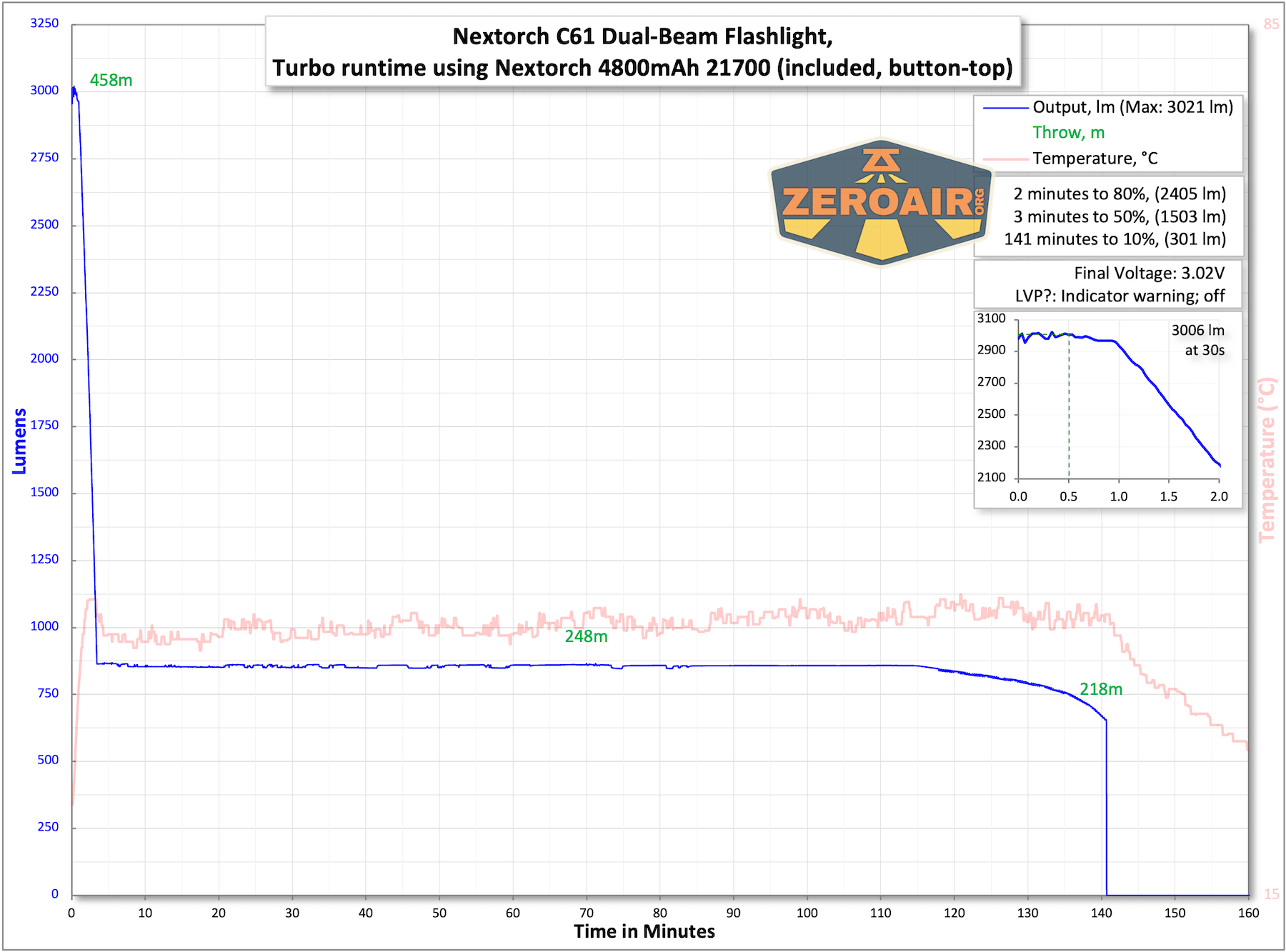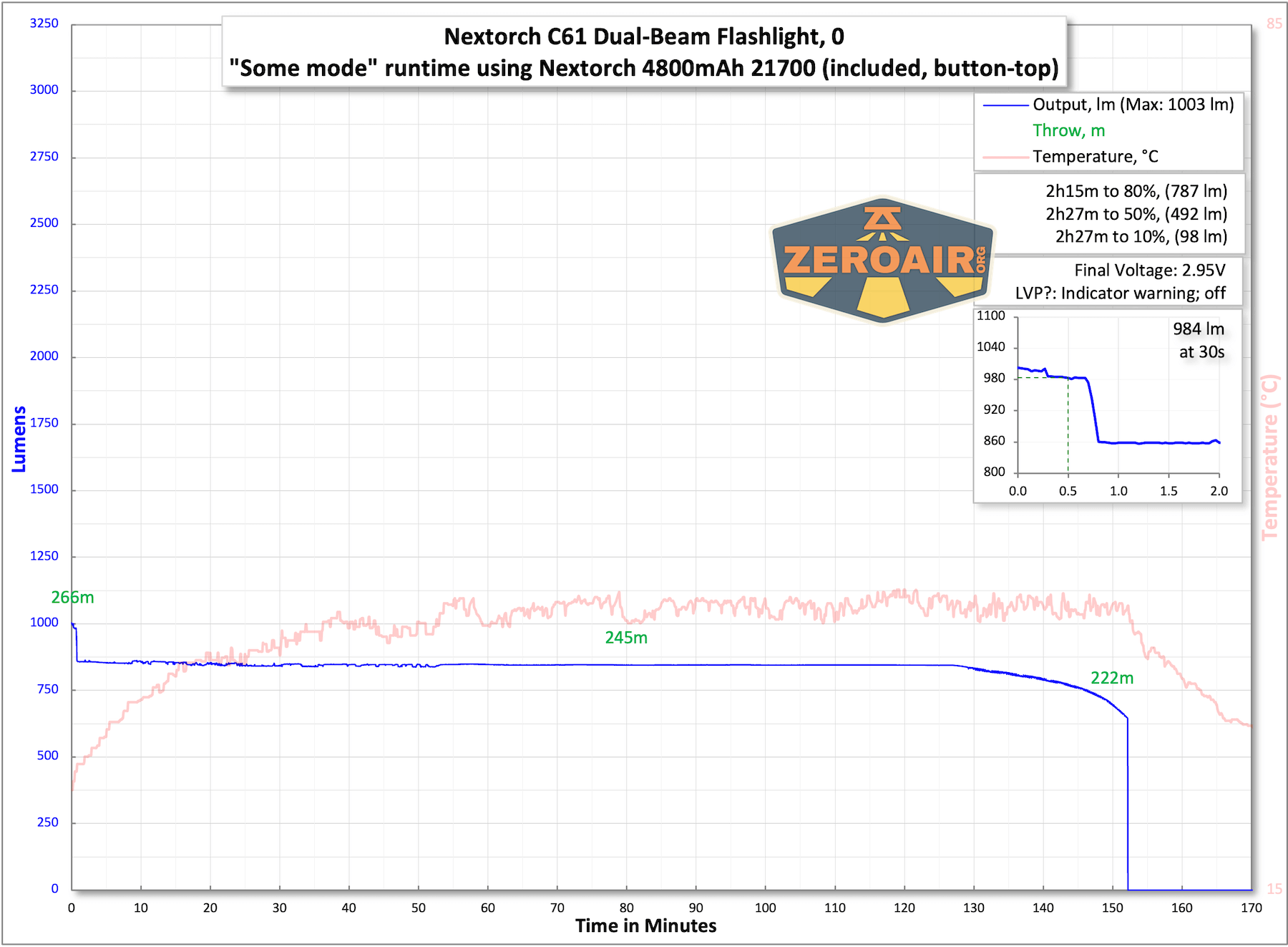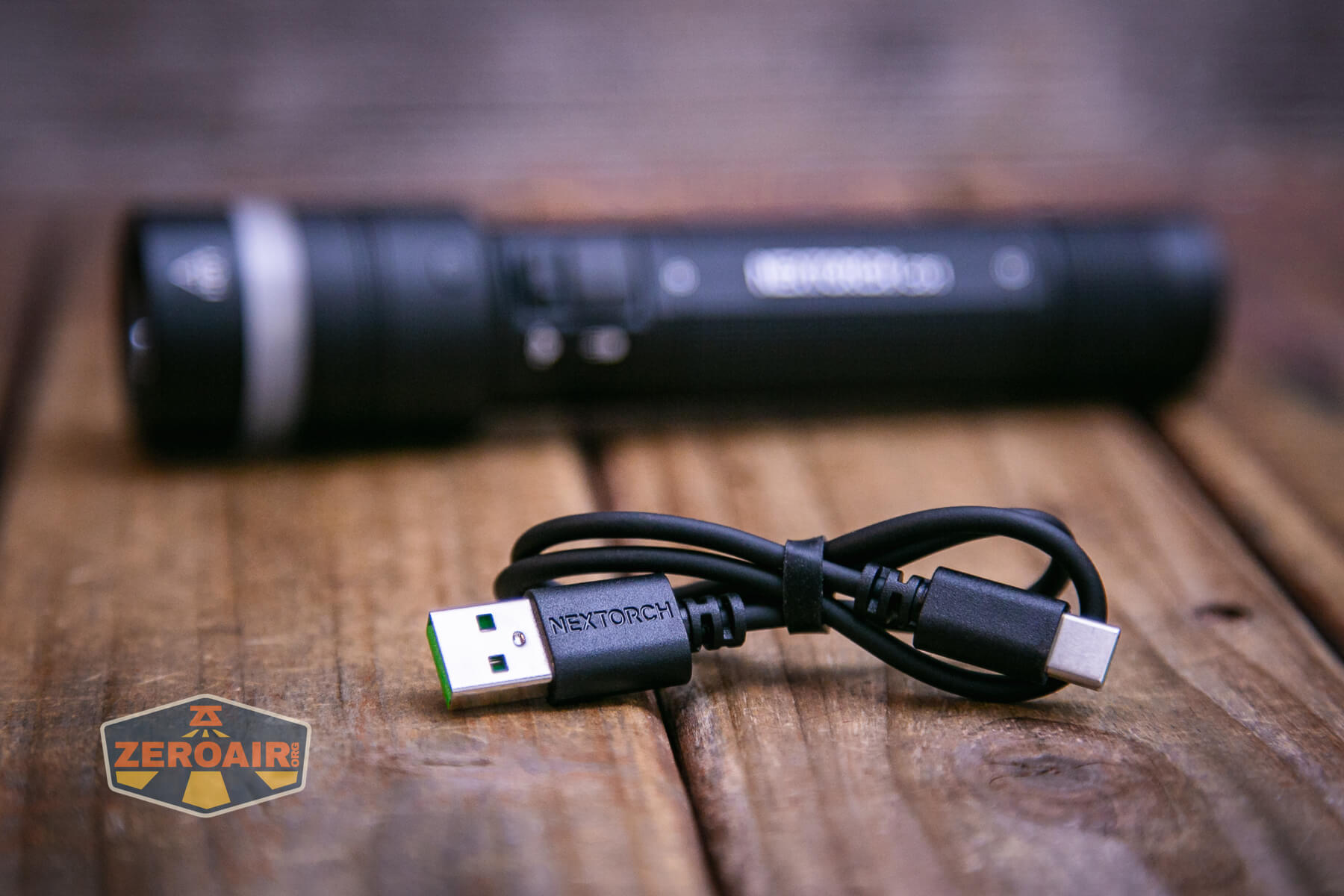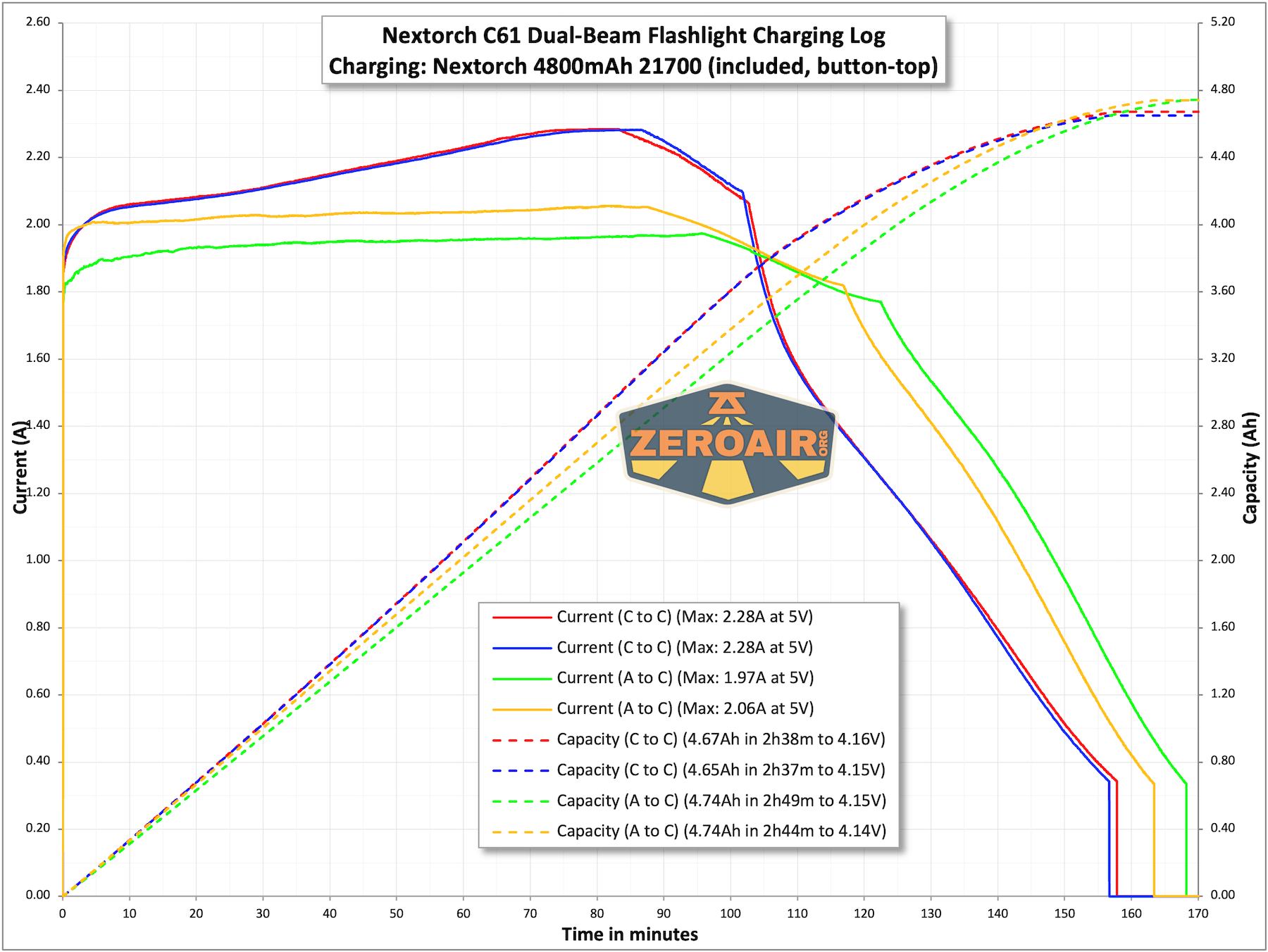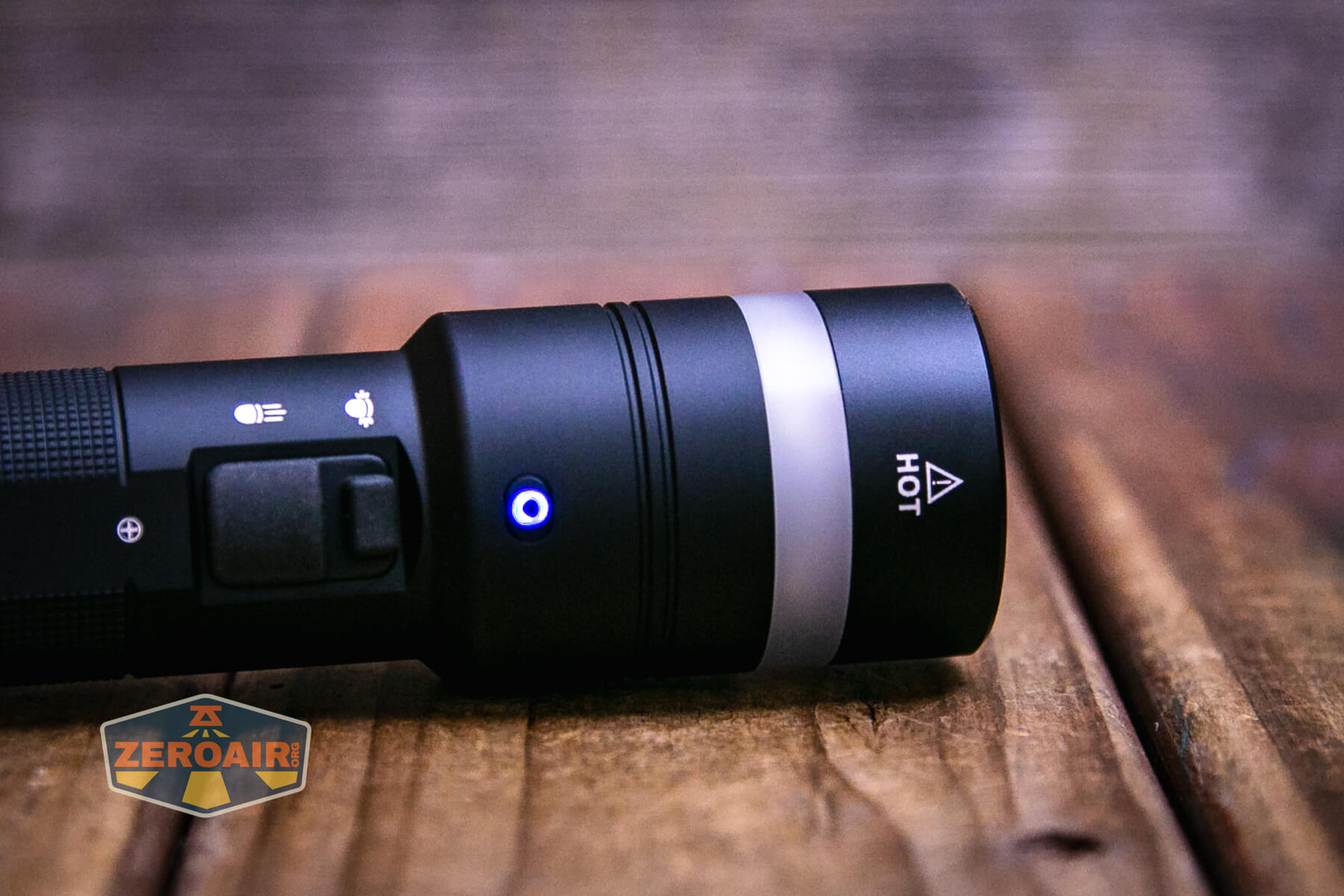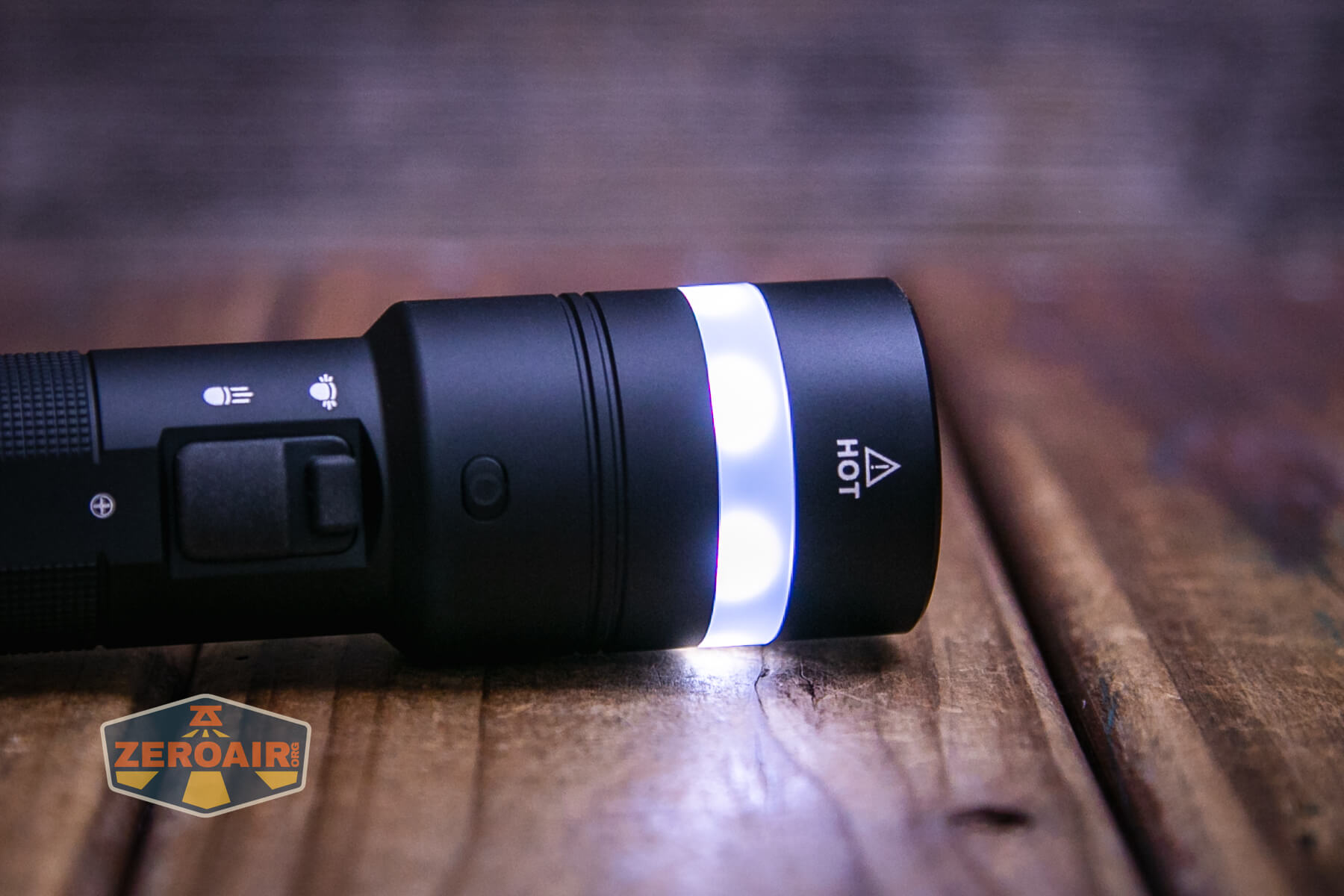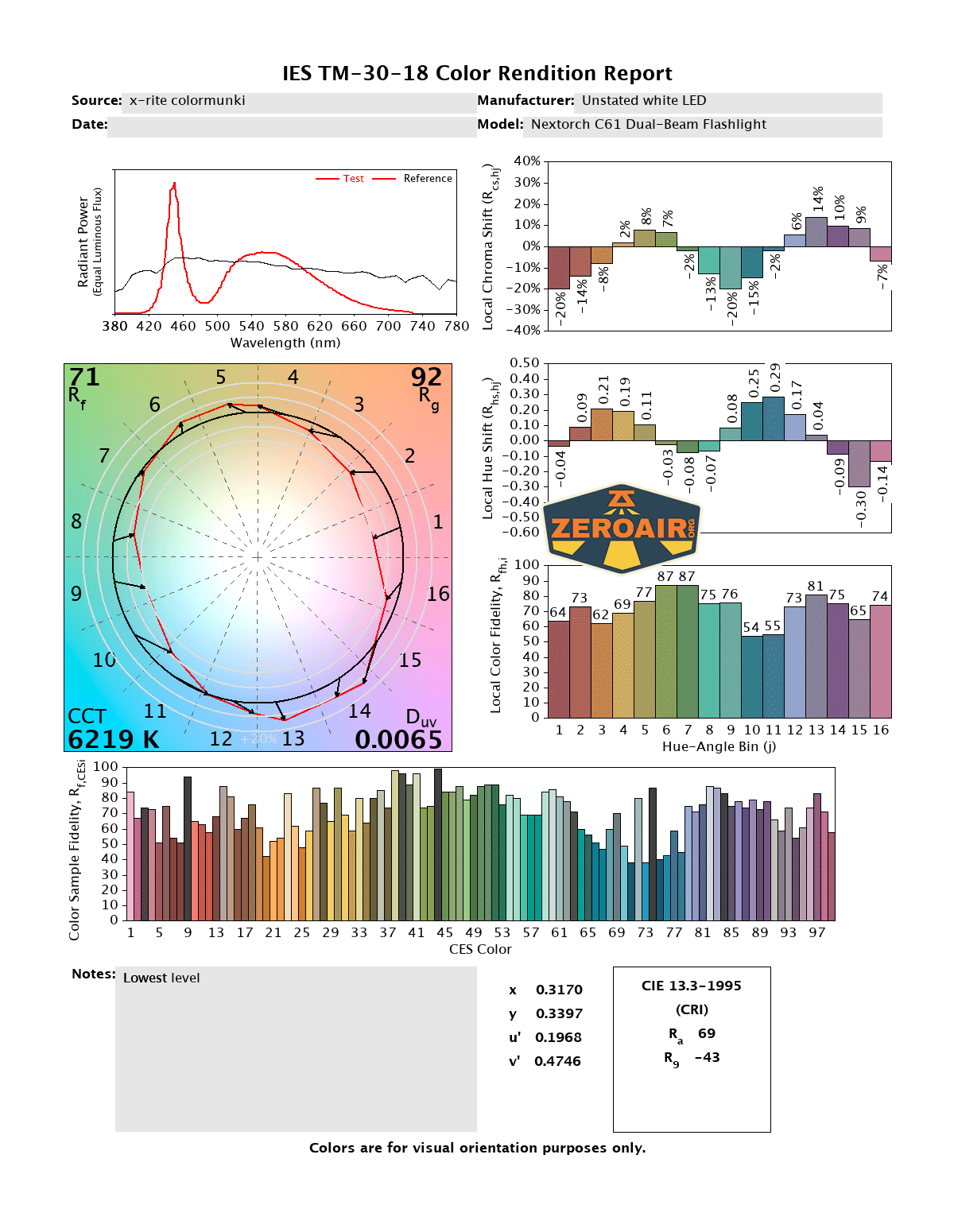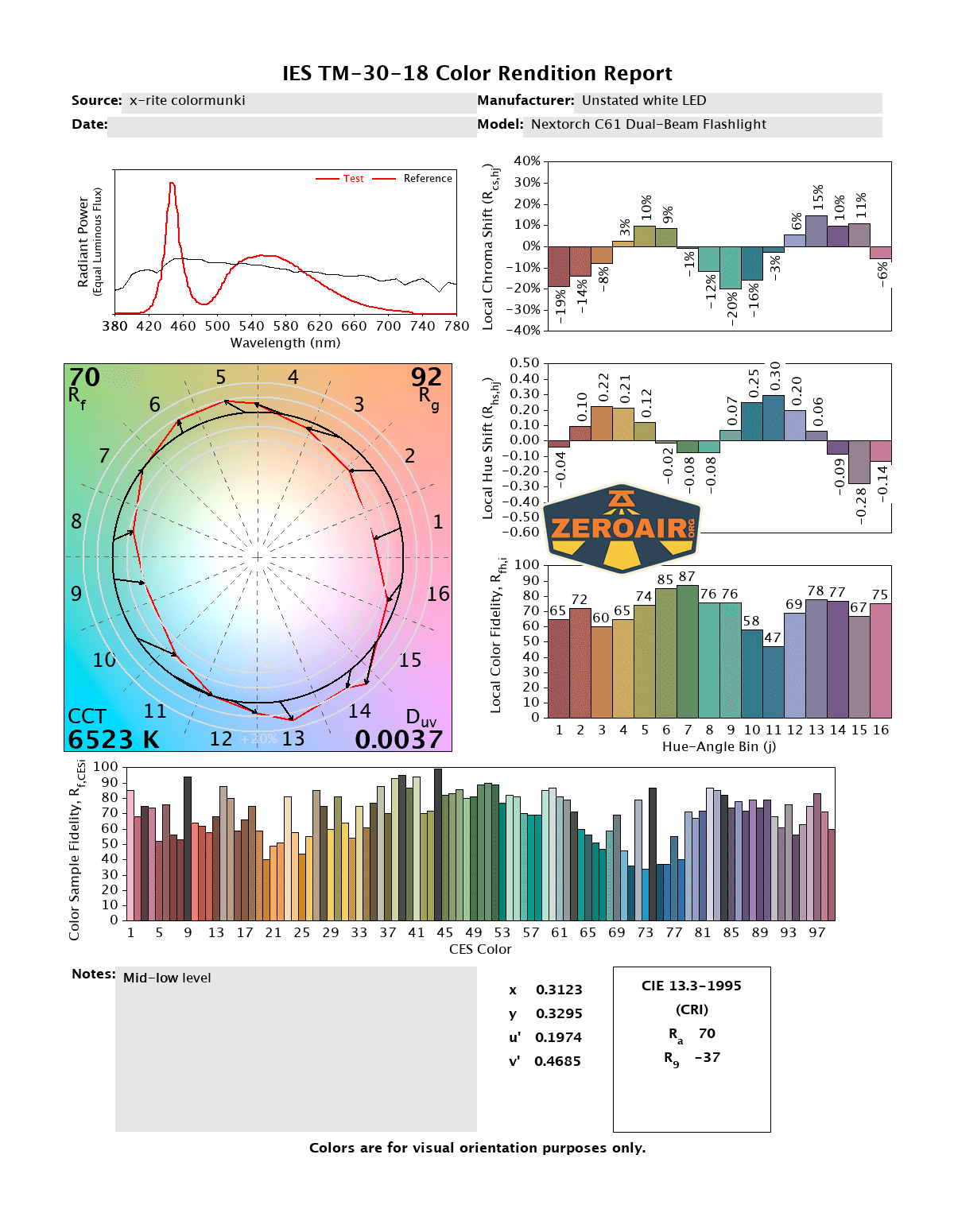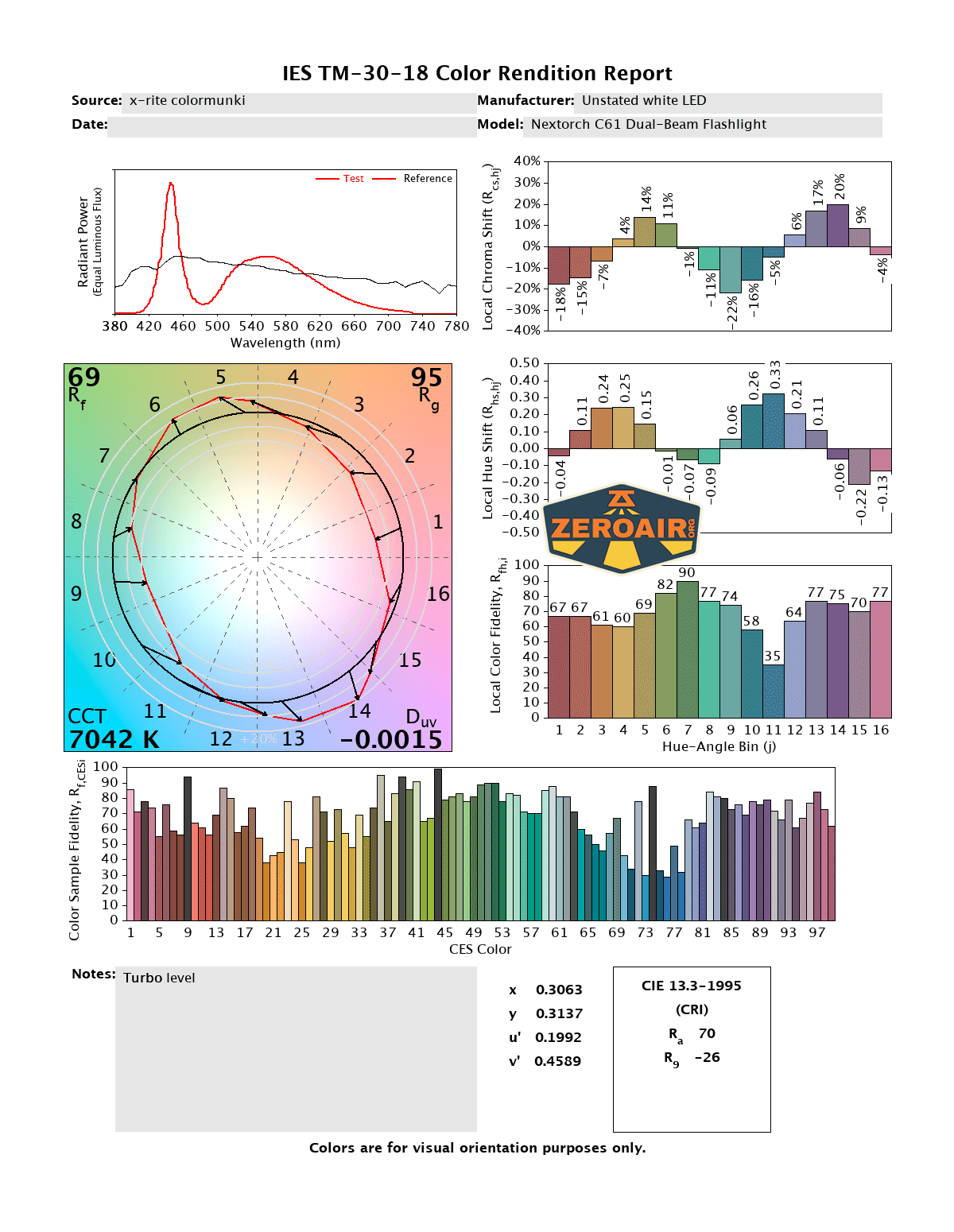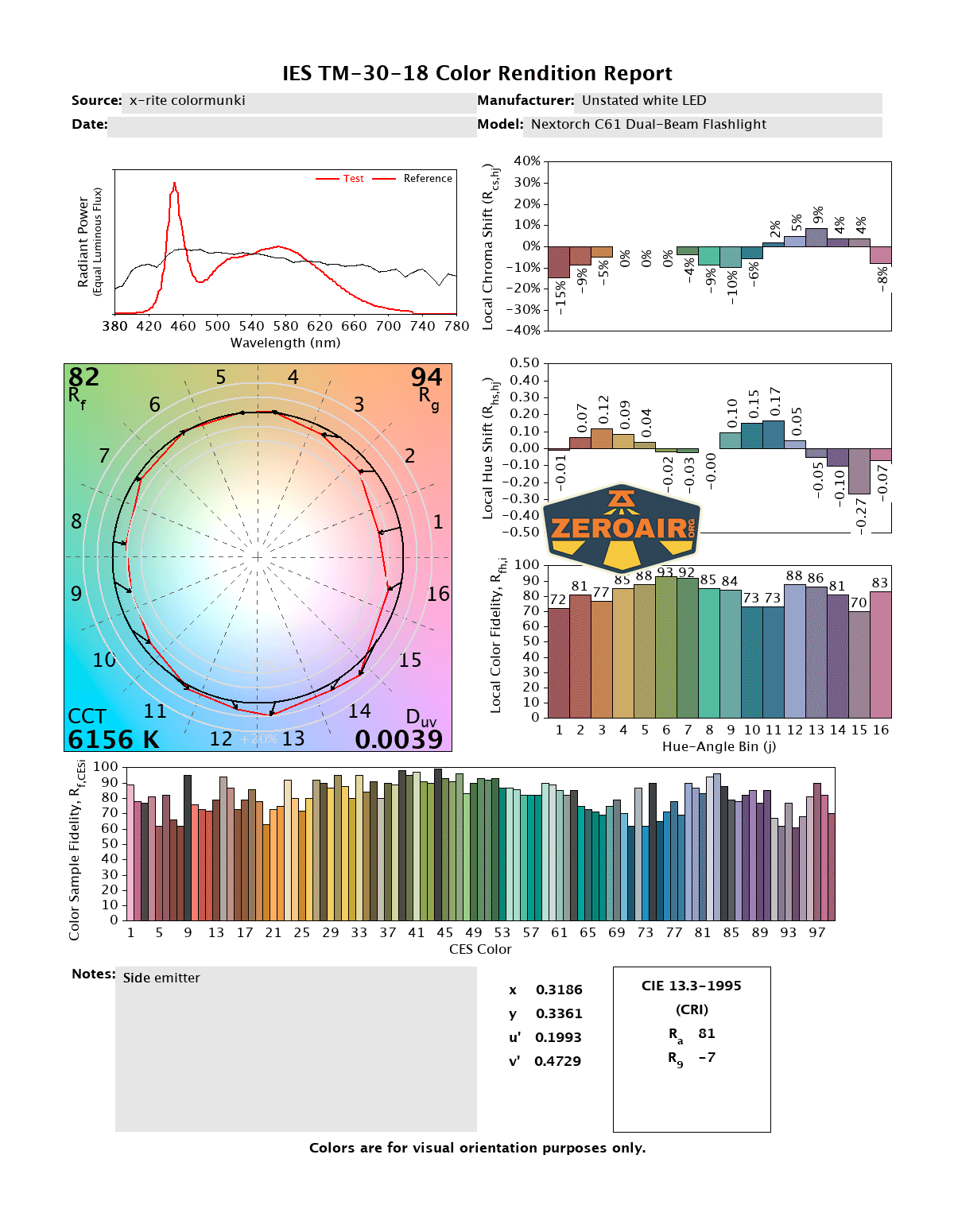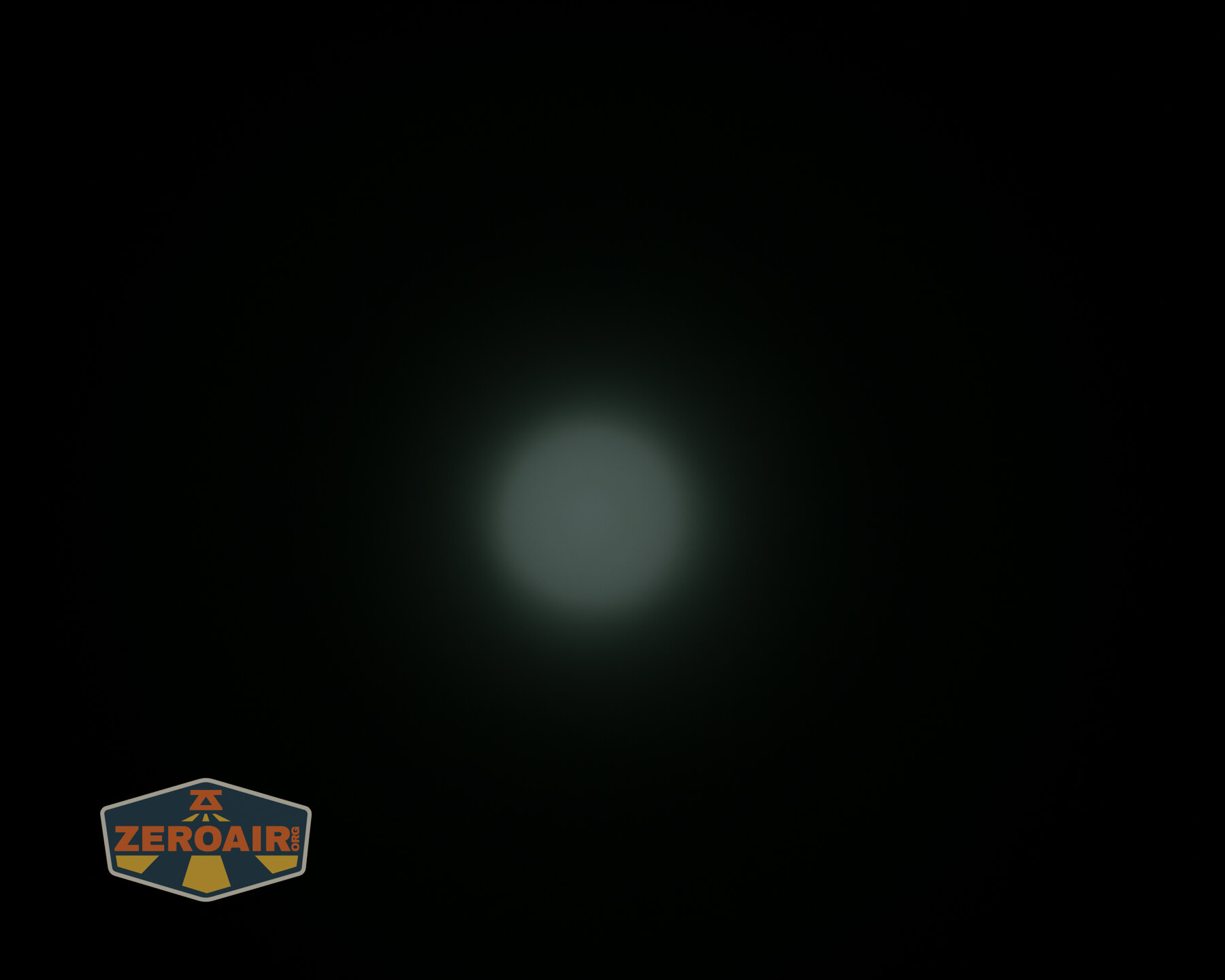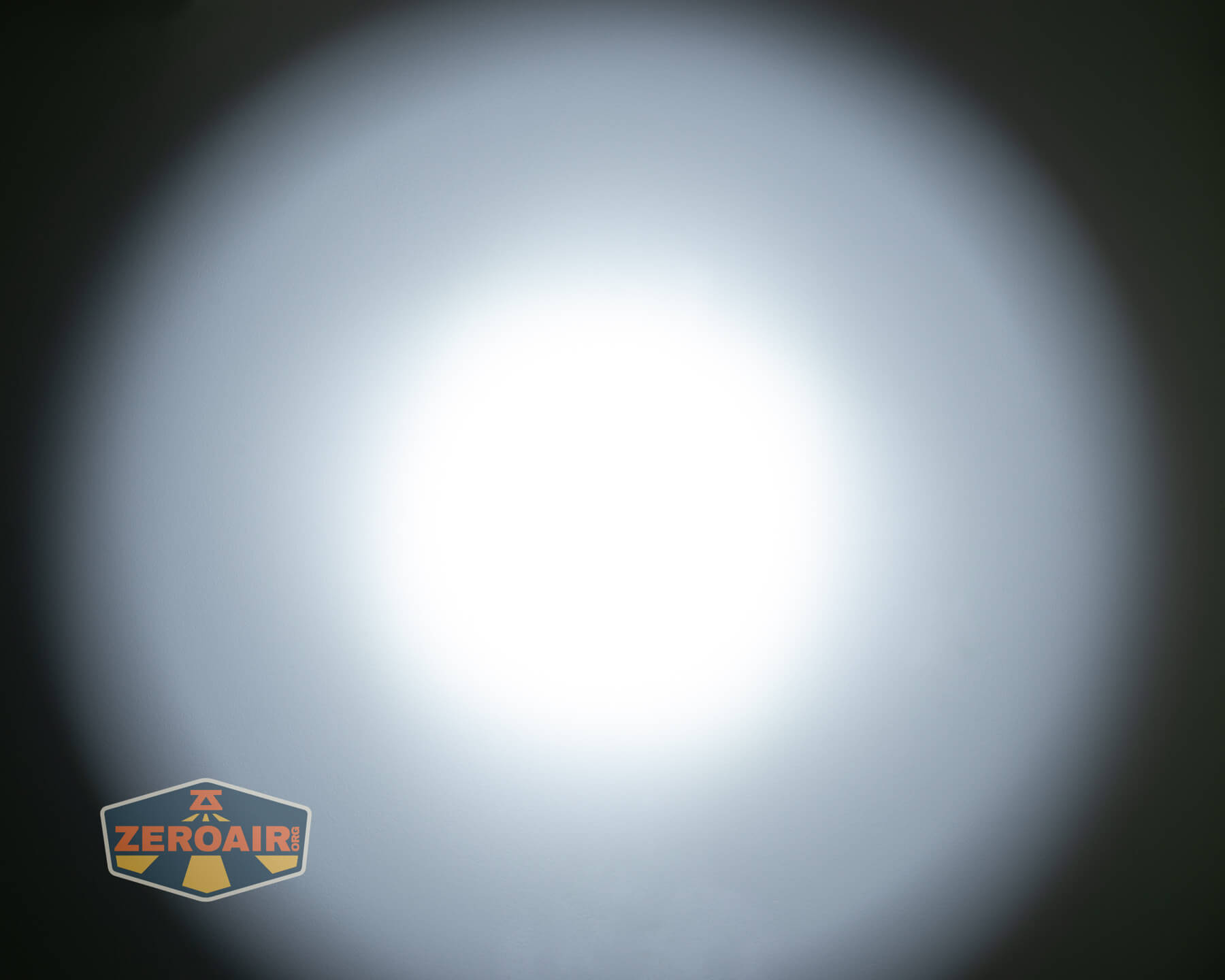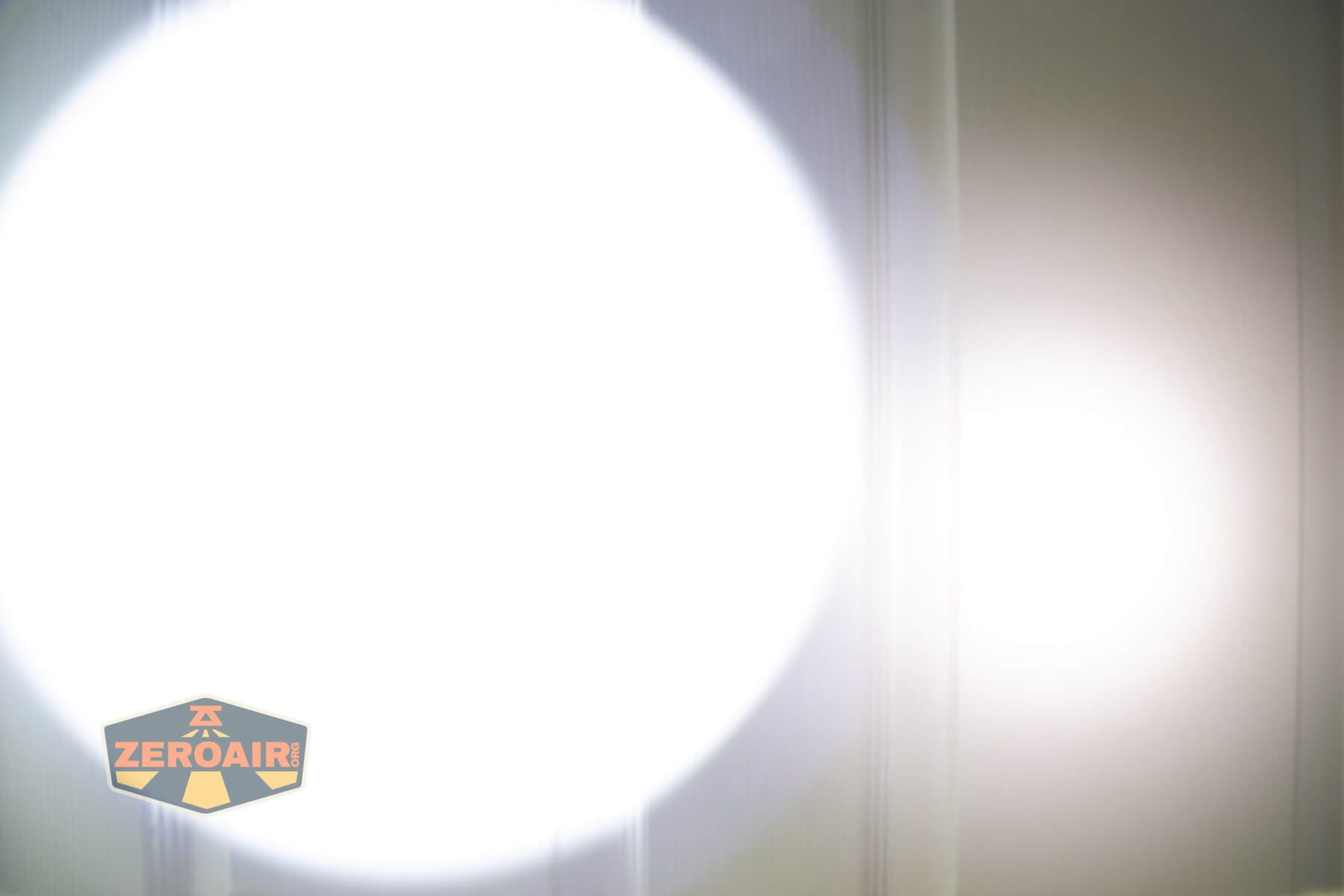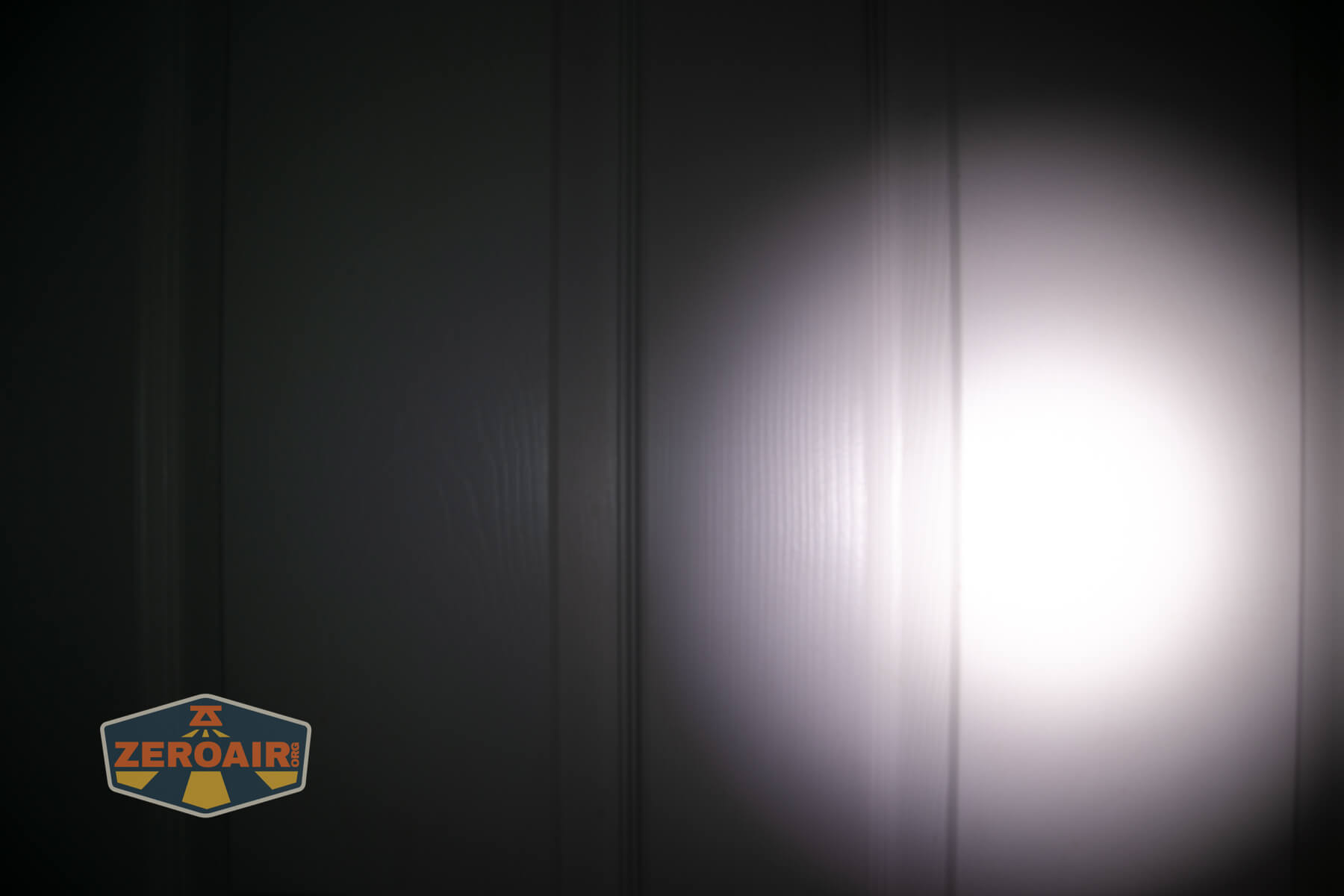Nextorch C61 Dual-Beam Flashlight Review
The Nextorch C61 Dual-Beam flashlight uses a domeless emitter for great throw and has a collar for floody white light. It charges via USB-C. Read on!
Official Specs and Features
Here’s a referral link to the Nextorch C61 Dual-Beam flashlight product page.
Versions
There’s only one version of the Nextorch C61 Dual-Beam flashlight.
Price
What’s Included
- Nextorch C61 Dual-Beam flashlight
- Nextorch 21700 cell
- Lanyard
- Charging cable
- Tactical grip
- Tactical grip installation tool
- Manual and other papers
Package and Manual
Build Quality and Disassembly
The Nextorch C61 Dual-Beam flashlight has a good heft and is a well-built light. It has a nice heft in hand and overall just feels like a good quality light. The grid pattern knurling is nice.
The tailcap has a nice beefy spring, and the threads are long and anodized.
Inside the cell tube, you can see that the head also has a spring.
Size and Comps
DIMENSIONS: 165mm x 35mm x 28.5mm
WEIGHT: 175g (without battery)
If the flashlight can headstand, I’ll show it here. If it can tailstand, I’ll also show that here!
Here’s the test light with the venerable Convoy S2+. The version below is a custom laser-engraved Convoy S2+ host by GadgetConnections.com. I did a full post on an engraved orange host right here! Or go straight to GadgetConnections.com to buy your Convoy S2+ now!
Also in the photo above, my Standard Reference Material (SRM) flashlight is the Hanko Machine Works Trident, an 18350 light. While I have not reviewed or tested the Gunner Grip version seen here, I have tested a Hanko Machine Works Trident Total Tesseract in brass. I love the Trident, and it’s a striking contrast to the inexpensive Convoy S2+, another great SRM.
Retention and Carry
One way to carry the Nextorch C61 Dual-Beam flashlight is this “lanyard”. Maybe that shouldn’t be in quotation marks – it IS a lanyard, but it offers so much more! It has a d-ring, is strethcy, and has quick-release loop, too. It’s very nice!
The second option to carry the Nextorch C61 Dual-Beam flashlight is an included (but not attached) tactical grip. That is installed using the included tool.
It’s Nextorch’s standard tactical grip, but attaching via two screws is new. I like their old way (because it was keyed, and also very secure), but this attachment is very secure too!
Finally, there’s a magnet in the tailcap.
Power and Runtime
Nextorch includes a single 21700 cell with the C61 Dual-Beam flashlight. It’s a 4800mAh cell and has a button top.
The cell goes into the Nextorch C61 Dual-Beam flashlight in the normal orientation – positive end toward the head.
Below are a number of runtime tests. It’s ramping-only, so all modes except Turbo are just randomly-selected levels.
The temperature lines in these charts are included as general context, not precise measurements. The values represent the range (min to max) during testing, but should not be taken as exact readings. Temperature sensors are attached however feasible and not always on the bezel or hottest spot (assuming that can even be clearly defined). Even with ideal placement, too many variables affect temperature to definitively state a specific max value.
Charging
Charging on the Nextorch C61 Dual-Beam flashlight is via USB-C. This charging port is on the head and has a press-in cover.
Nextorch includes a short USB to USB-C charging cable.
Charging here looks fine and works with A to C and C to C both. Either is fine and charges in about the same amount of time. I’ll note that compared to other similar Nextorch lights, the charging is improved on this model!
Pulse Width Modulation
PWM is not observed at any of the tested levels of the Nextorch C61 Dual-Beam flashlight.
Click here to see a “baseline” – a chart with almost no light hitting the sensor.
Then there’s the Ultrafire WF-602C flashlight, which has some of the worst PWM I’ve seen. It’s so bad that I used a post about it to explain PWM! Here are multiple timescales (10ms, 5ms, 2ms, 1ms, 0.5ms, 0.2ms) to make comparing this “worst” PWM light to the test light easier. That post also explains why I didn’t test the WF-602C at the usual 50us scale.
User Interface and Operation
Nextorch uses an interesting switch setup here on the C61 Dual-Beam flashlight. There are two switches, but they share a (“separated”) rubber cover. They’re both e-switches. This switch is exactly like the one on the Nextorch P82 and P83.
In the photo below, the rightmost switch is the side light switch.
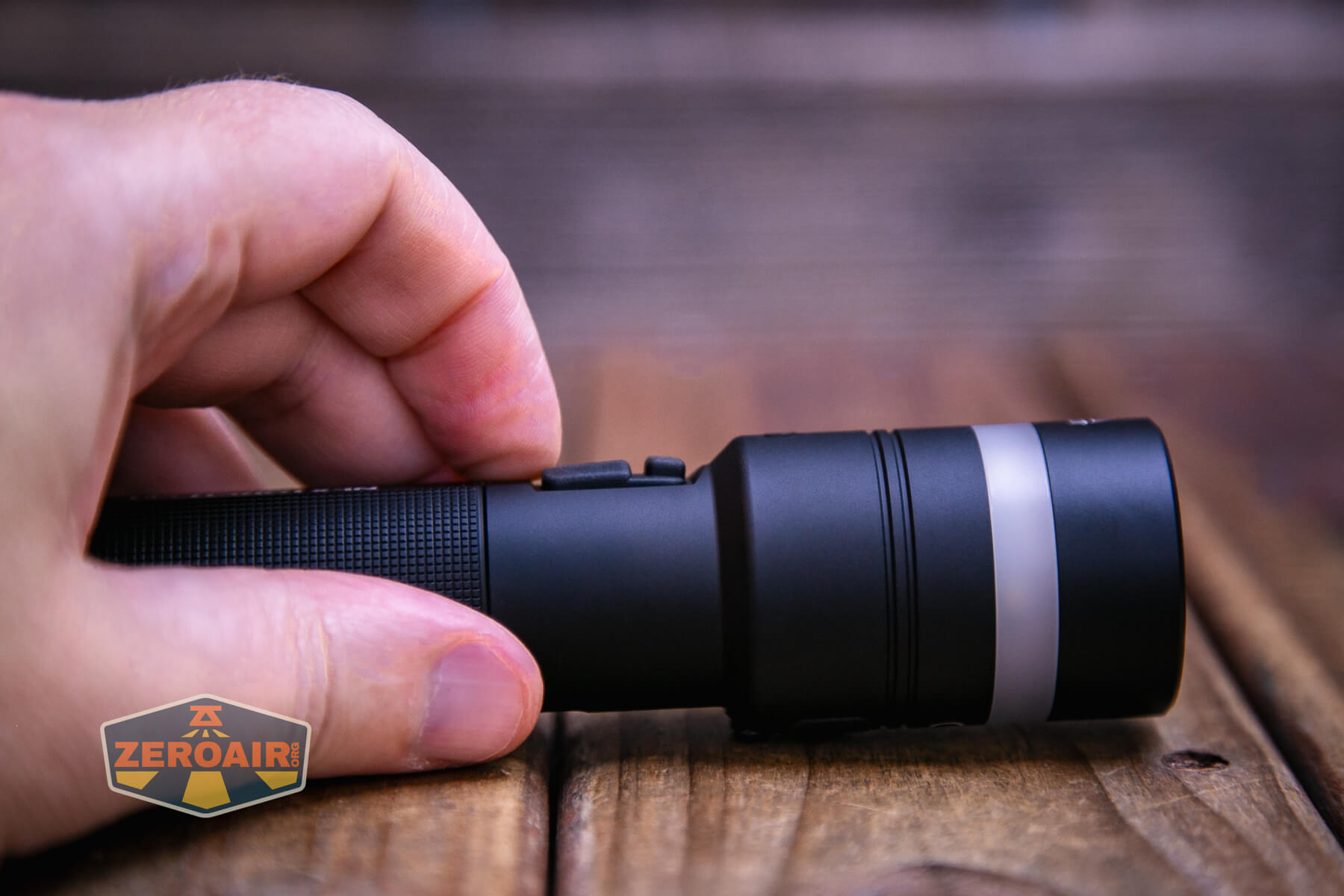
The switches are “side light” (the smaller one) and “main light”.

Here’s a user interface table!
| State | Action | Result |
|---|---|---|
| Off | Click the main light switch | Front on – Mode memory |
| Off | Double click the main light switch | Front Turbo |
| On | Hold the main light switch | Front stepless dimming^ |
| Any | Double click side light switch | Lockout^^ |
| Lockout | Double click side light switch | Unlock |
| Off | Click the side light switch | Side on – Mode memory |
| Side on | Hold the side light switch | Side stepless dimming^ |
^ The blue indicator flashes 2x when the minimum or maximum is reached.
^^ Indicator turns red to indicate lockout.
LED and Beam
Nextorch doesn’t say that the emitter is. It’s domeless, though, and has a nice smooth reflector. It should (and does) provide excellent throw!
The side emitter array isn’t a COB – it does seem like individual emitters (approximately 7 of them.) But the opaque cover and ring setup makes them very floody.
LED Color Report (CRI and CCT)
The front emitter is unsurprisingly cool to very cool white and low CRI. The side emitters are still cool white, but at least have better CRI.
CCT (Correlated Color Temperature) refers to the measurement of the color appearance of light, expressed in Kelvins (K), which indicates whether the light is warm (yellowish) or cool (bluish). A lower CCT (below 3000K) is considered warm light, while a higher CCT (above 5000K) gives cooler, bluish light.
CRI (Color Rendering Index) is a measure of how accurately a light source renders colors in comparison to natural sunlight. Scored on a scale from 0 to 100, higher CRI values indicate that colors appear more true to life and vibrant, similar to how they would look under the sun.
Beamshots
These beamshots always have the following settings: f8, ISO100, 0.3s shutter, and manual 5000K exposure. These photos are taken at floor level, and the beam hits the ceiling around 9 feet away.
Tint vs BLF-348 (KillzoneFlashlights.com 219b version) (affiliate link)
I keep the test flashlight on the left and the BLF-348 reference flashlight on the right. These photos are taken around 18 inches from the door.
I compare everything to the KillzoneFlashlights.com 219b BLF-348 because it’s inexpensive and has the best tint!
Summary and Conclusion
The Nextorch C61 Dual-Beam flashlight has a great set of features. Charging works great, and the flood ring is very floody! The user interface is simple enough to follow, but I’d really prefer that the light offer discrete modes instead of only ramping. The build quality is excellent!
The Big Table
| Nextorch C61 Dual-Beam flashlight | |
|---|---|
| Emitter: | Unstated white LED |
| Price in USD at publication time: | $95.99 |
| Cell: | 1×21700 |
| Runtime Graphs | |
| LVP? | Yes |
| Switch Type: | Dual e-switches (probably) |
| On-Board Charging? | Yes |
| Charge Port Type: | USB-C |
| Charge Graph | |
| Power off Charge Port | No modes in any condition |
| Claimed Lumens (lm) | 3500 |
| Measured Lumens (at 30s) | 3006 (85.9% of claim)^ |
| Candela per Lumen | 17.7 |
| Claimed Throw (m) | 420 |
| Candela (Calculated) in cd (at 30s) | 1424lux @ 5.994m = 51162cd |
| Throw (Calculated) (m) | 452.4 (107.7% of claim)^ |
| Claimed CCT | – |
| Measured CCT Range (K) | 6200-7000 Kelvin |
| Item provided for review by: | Nextorch |
| All my Nextorch reviews! | |
^ Measurement disclaimer: Testing flashlights is my hobby. I use hobbyist-level equipment for testing, including some I made myself. Try not to get buried in the details of manufacturer specifications versus measurements recorded here; A certain amount of difference (say, 10 or 15%) is perfectly reasonable.
What I like
- Solid build quality
- Charging is very consistent
- Includes cell
- Side emitters have better CRI (than the front)
- Simple user interface
What I don’t like
- Price is getting on up there!
- Very cool white main emitter
- Ramping only (no discrete modes)
Notes
- This content originally appeared at zeroair.org. Please visit there for the best experience!
- Please use my Amazon.com referral link to help support zeroair.org!
- Please support me on Patreon! I deeply appreciate your support!
